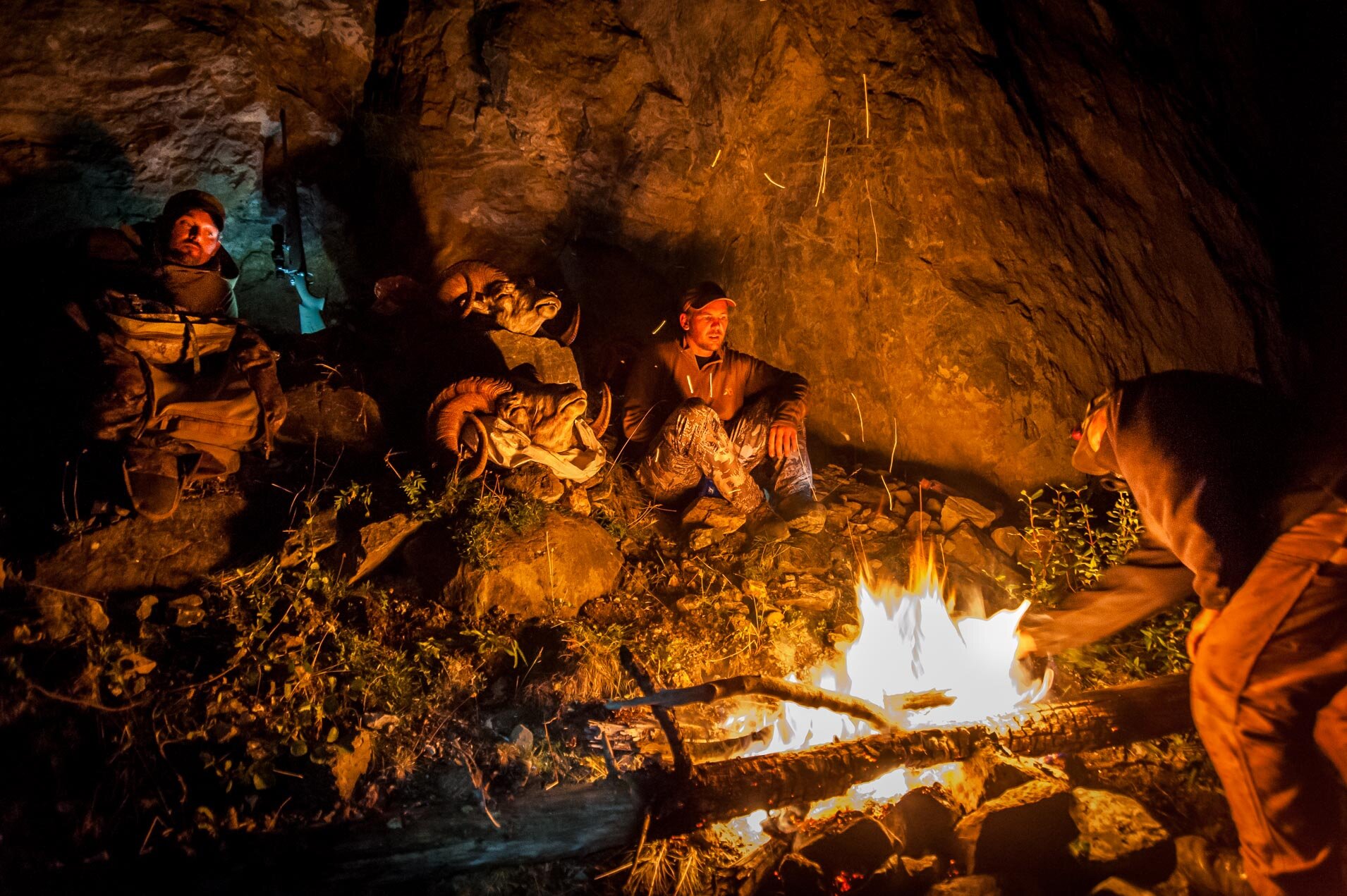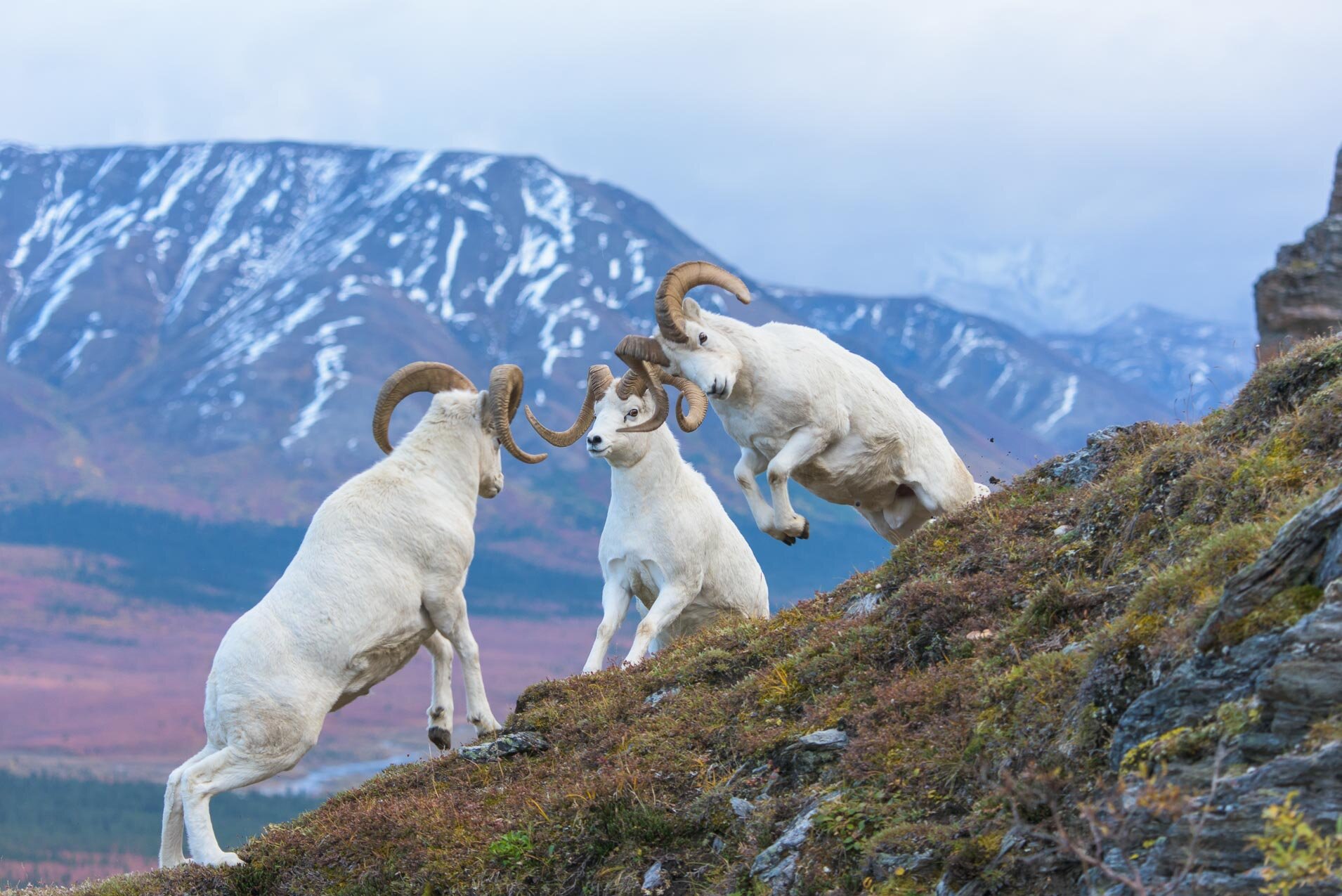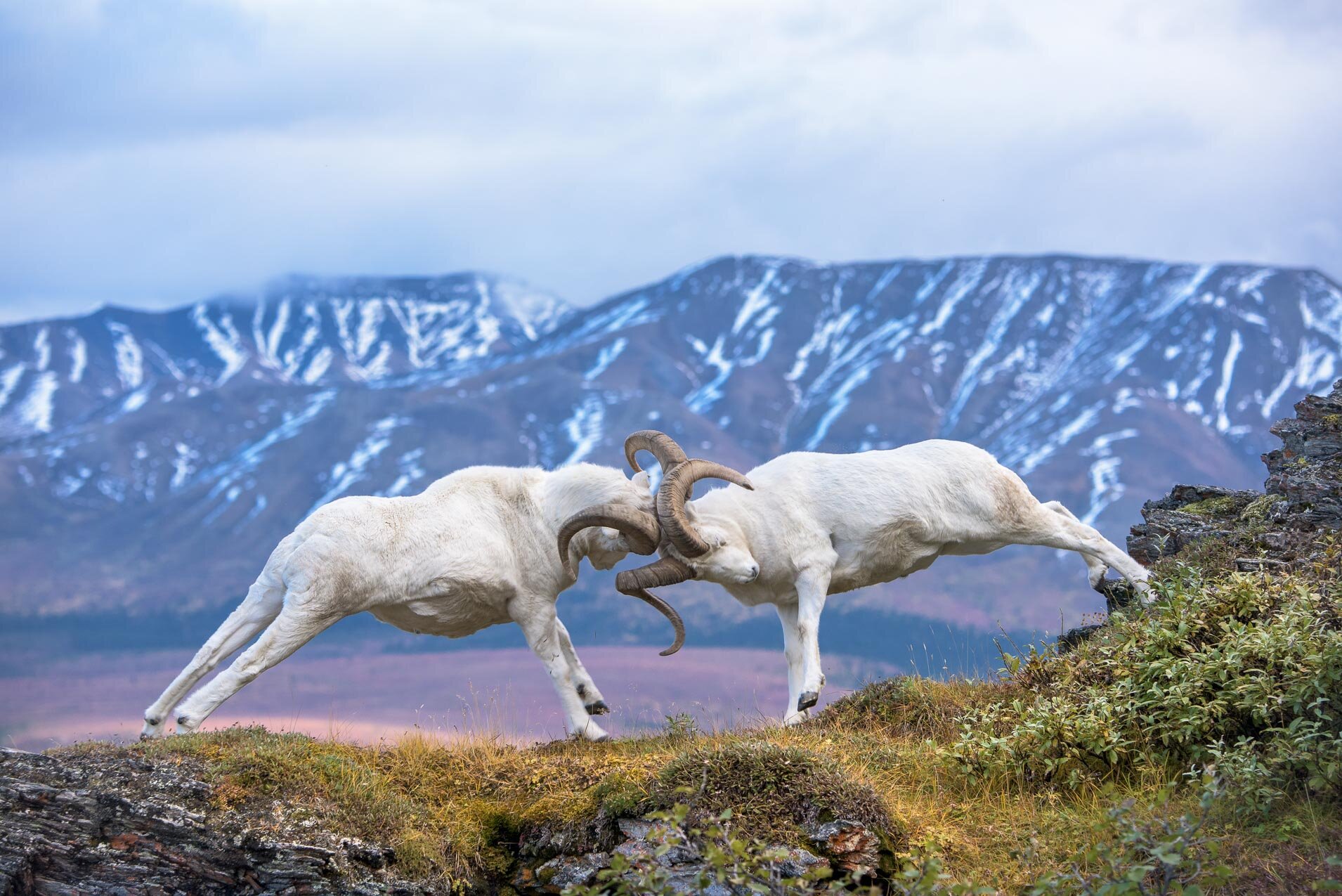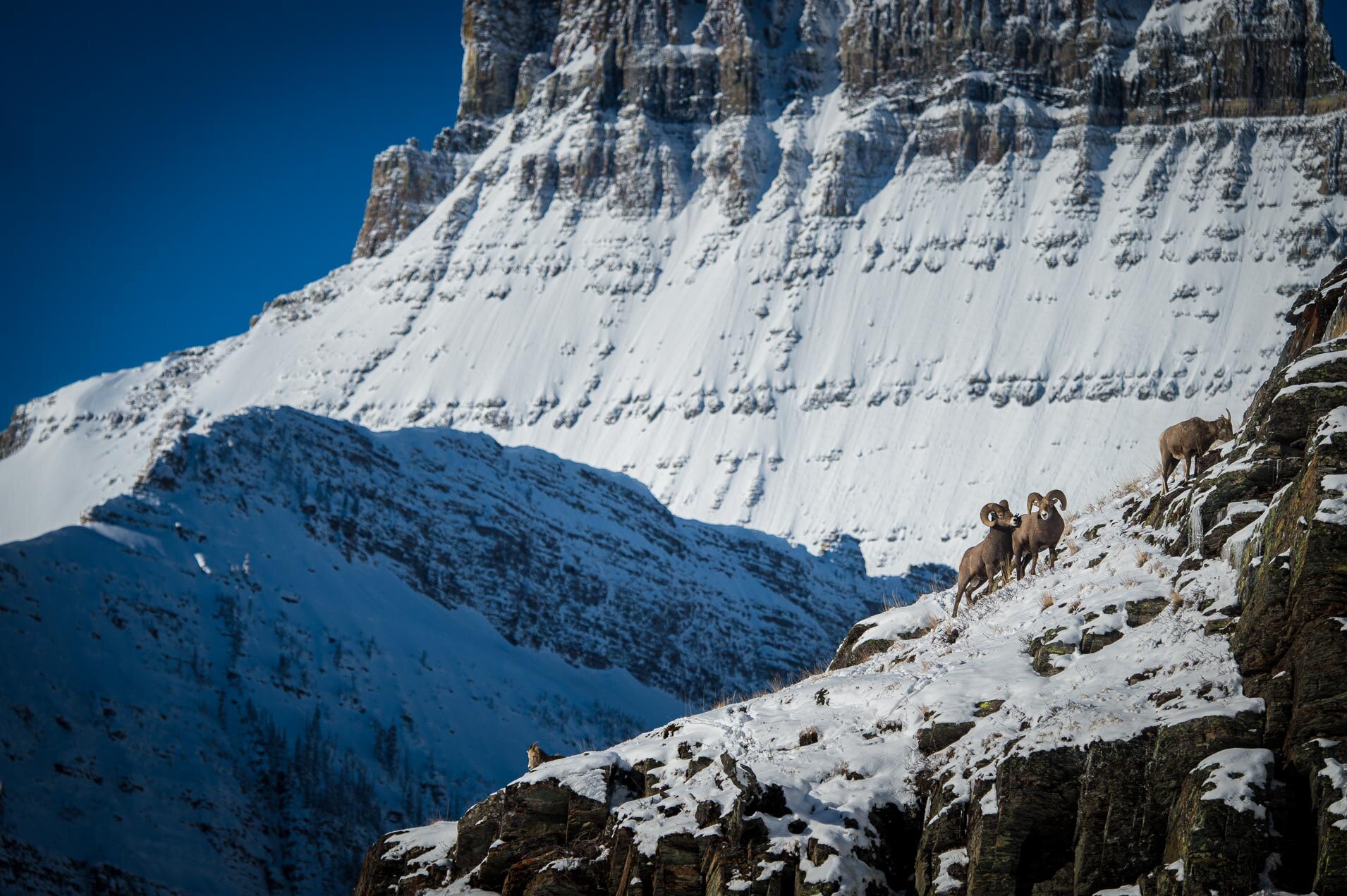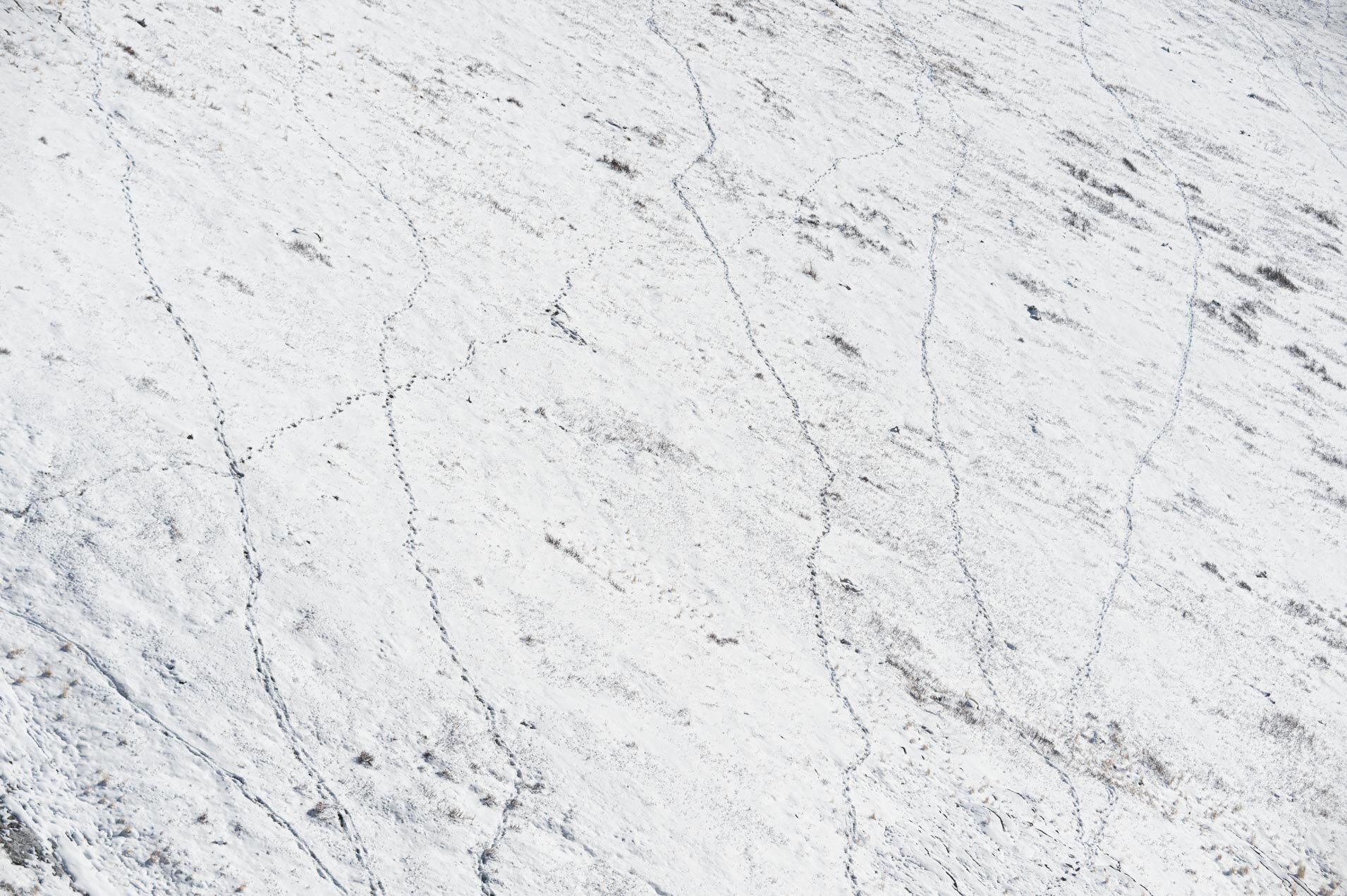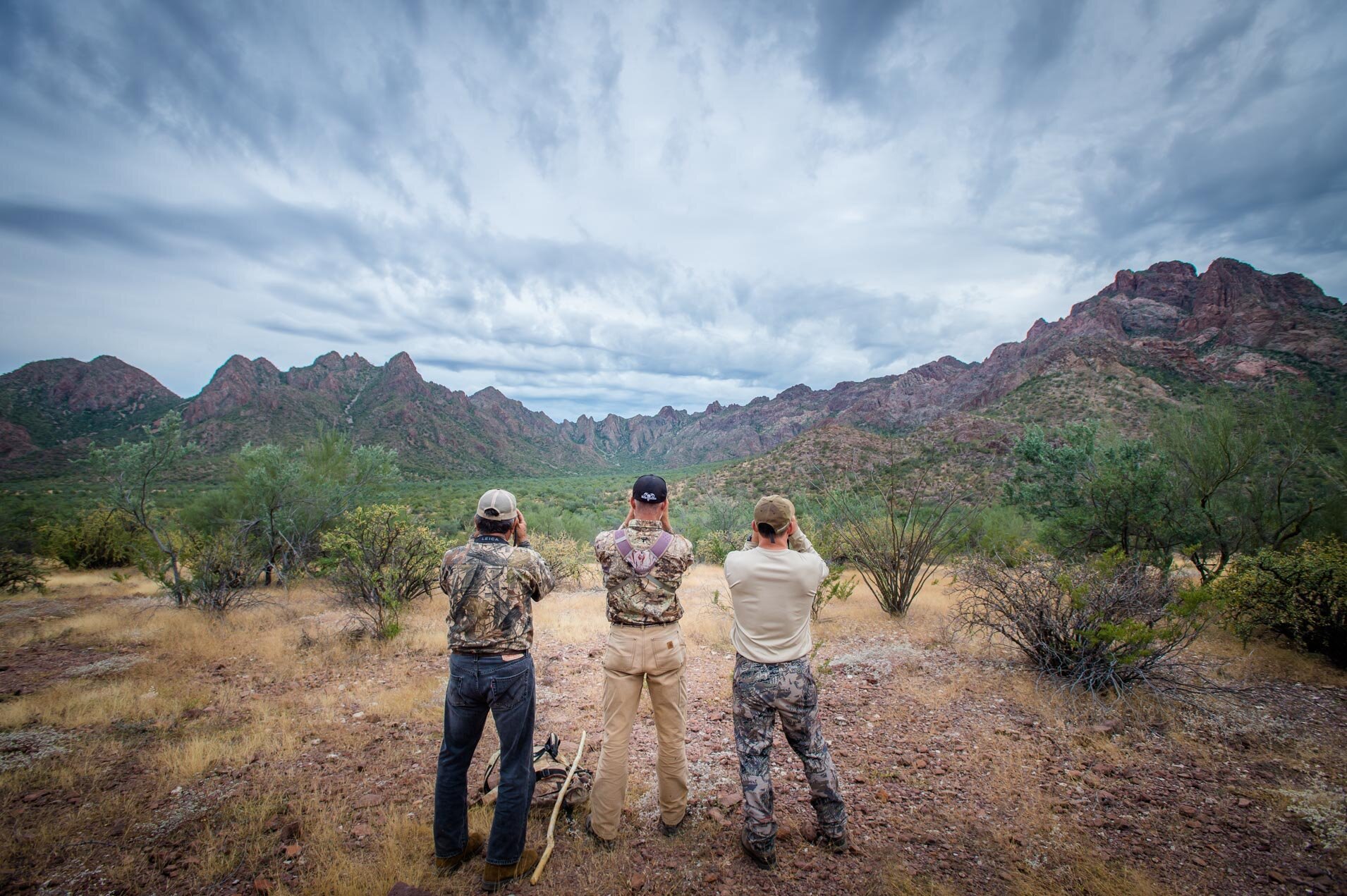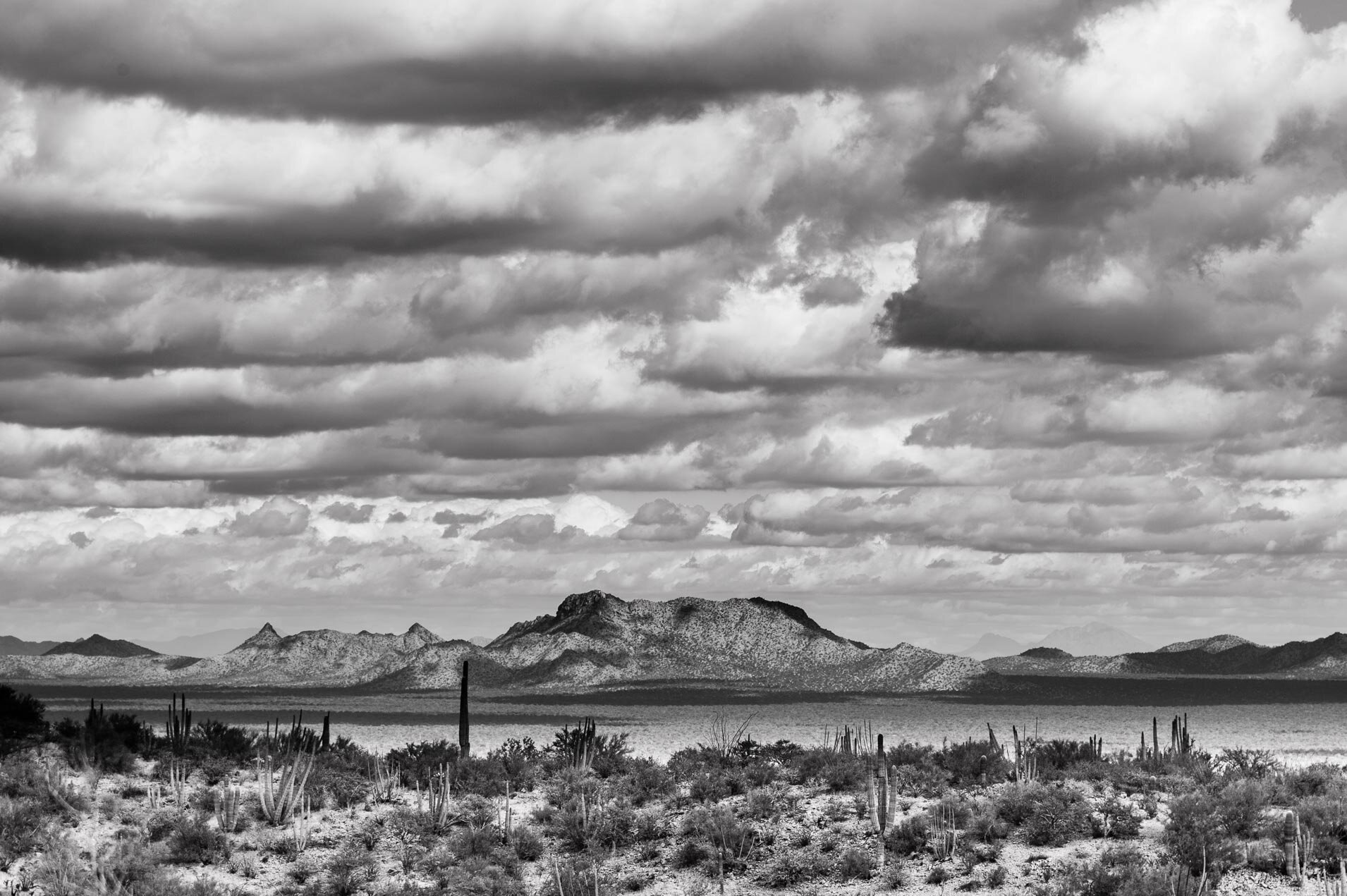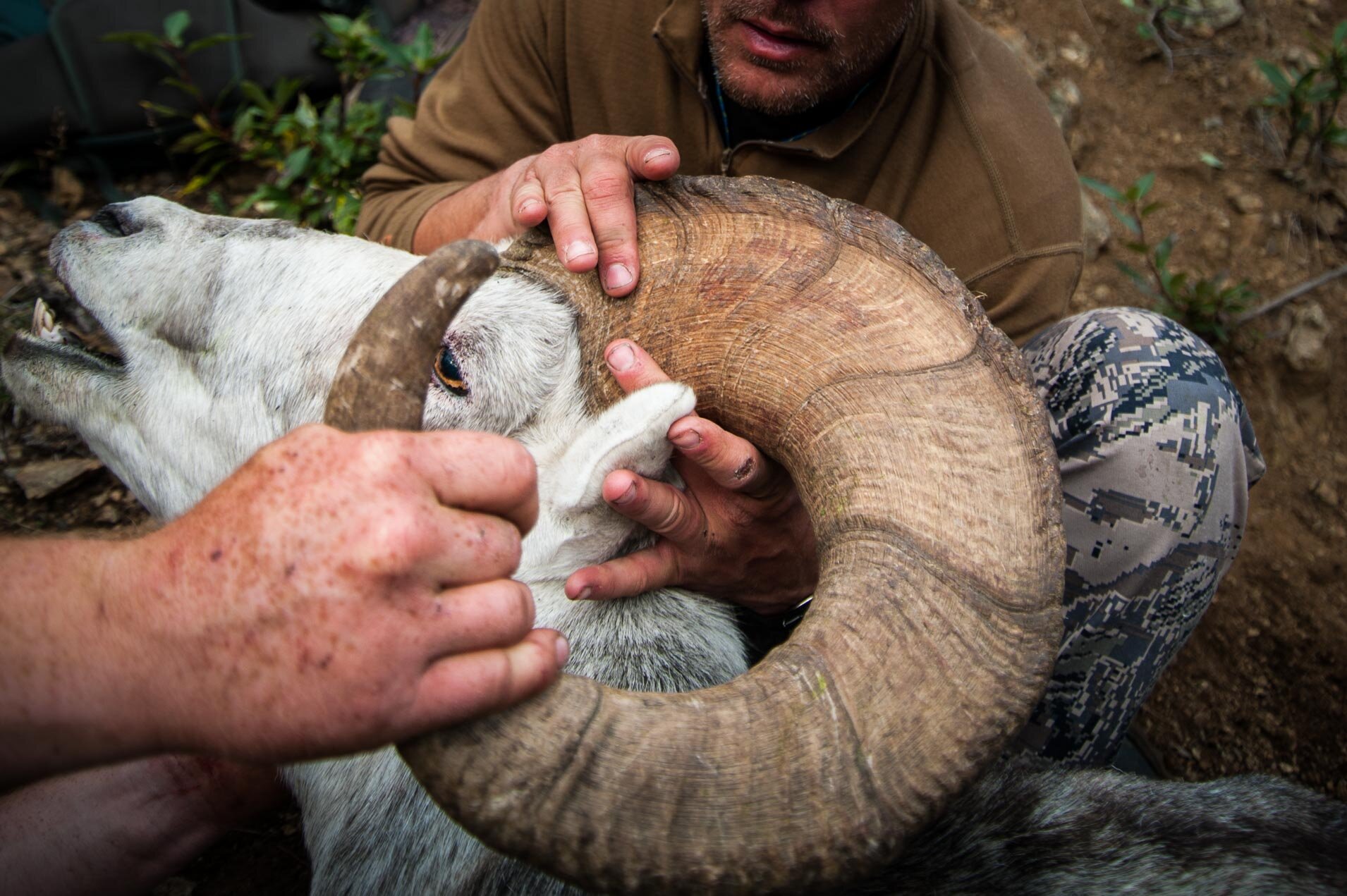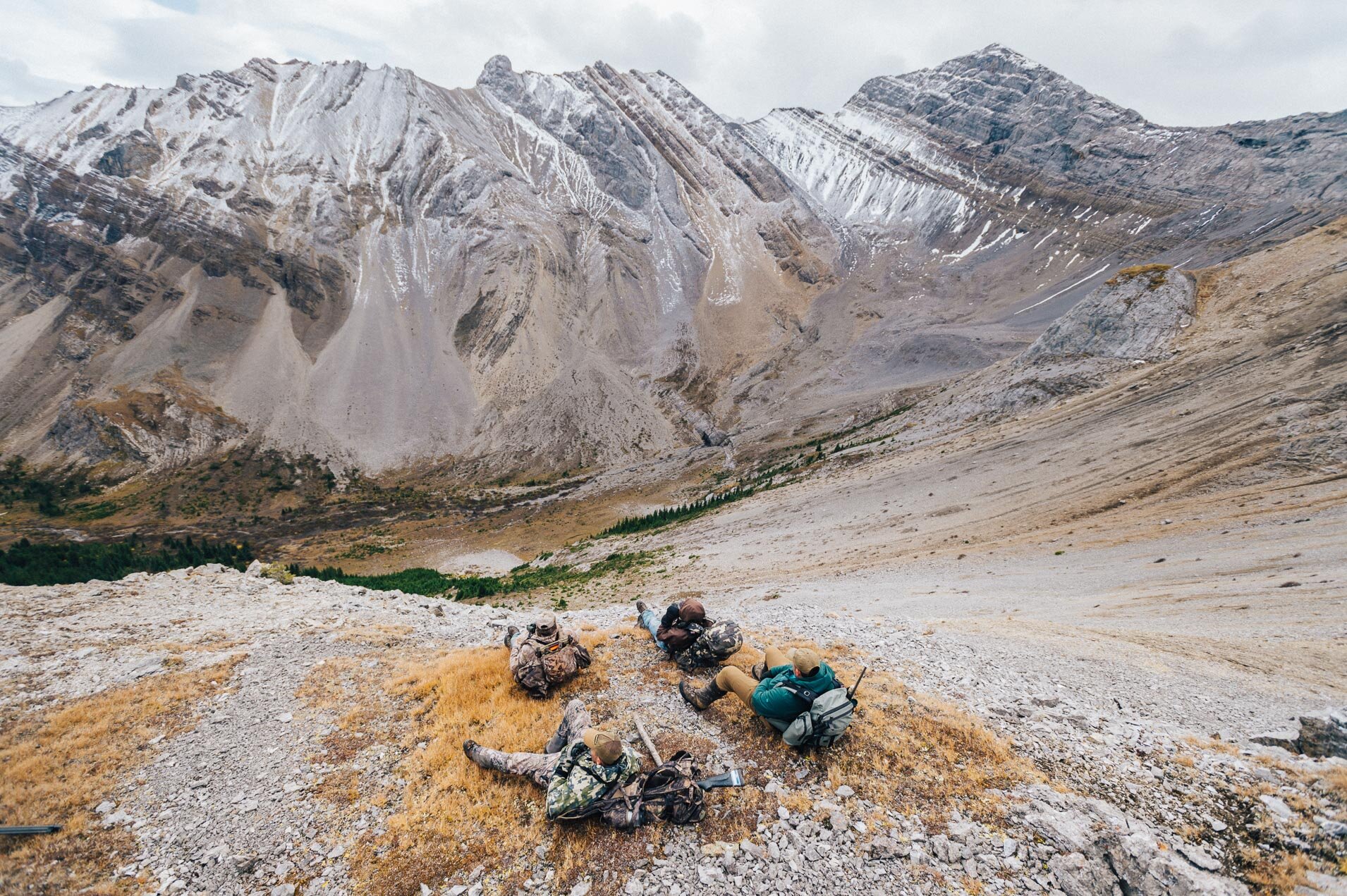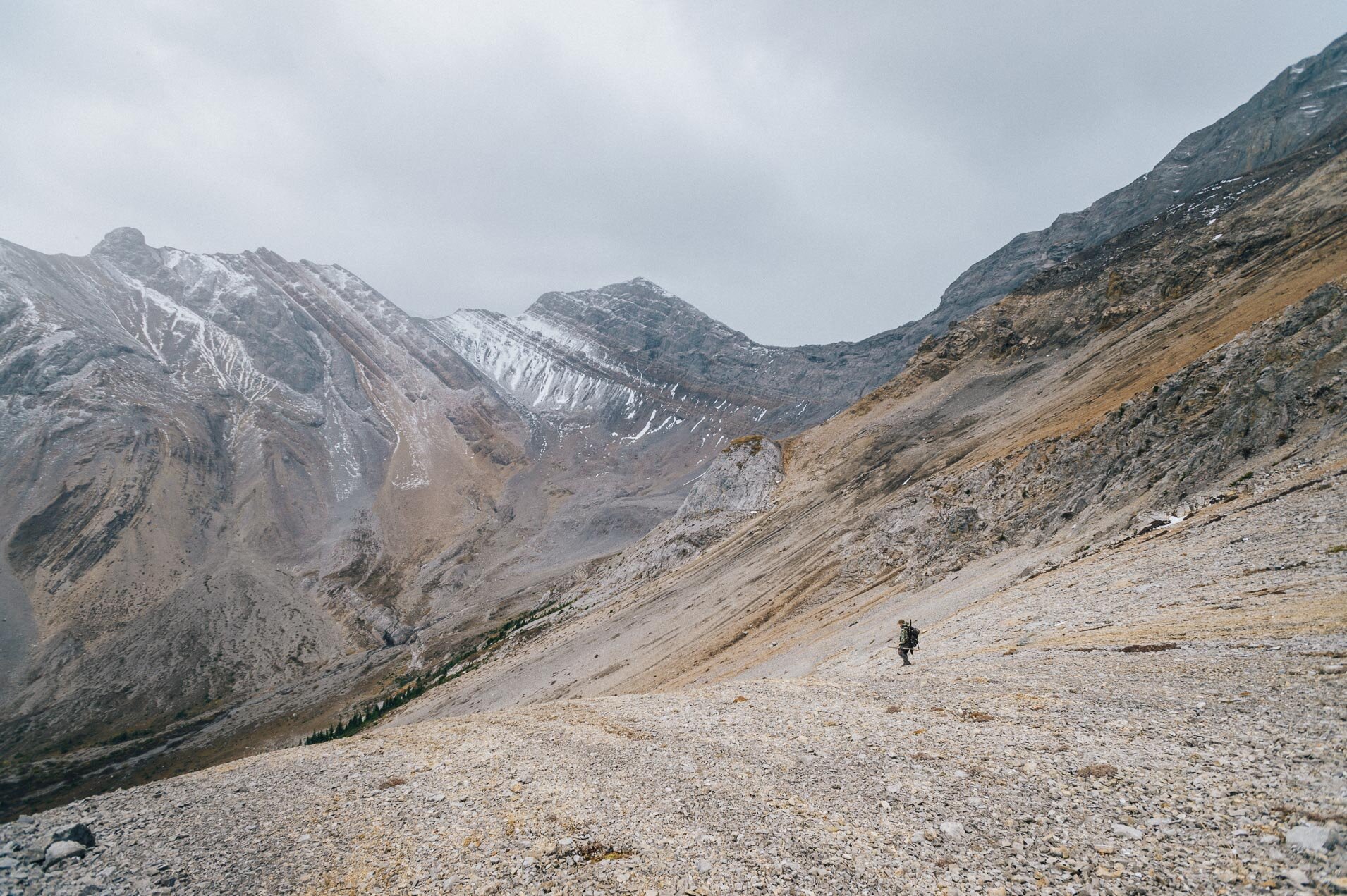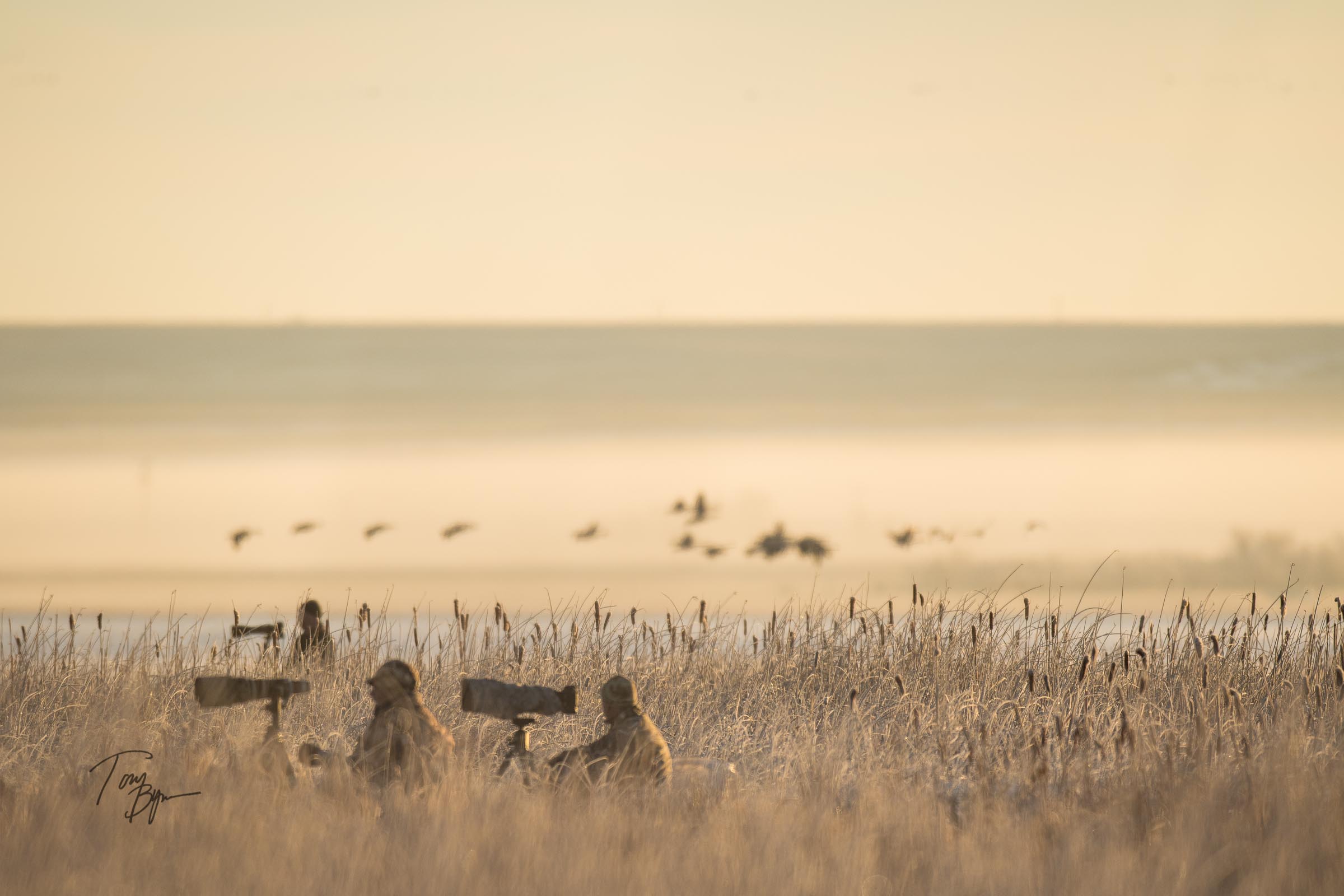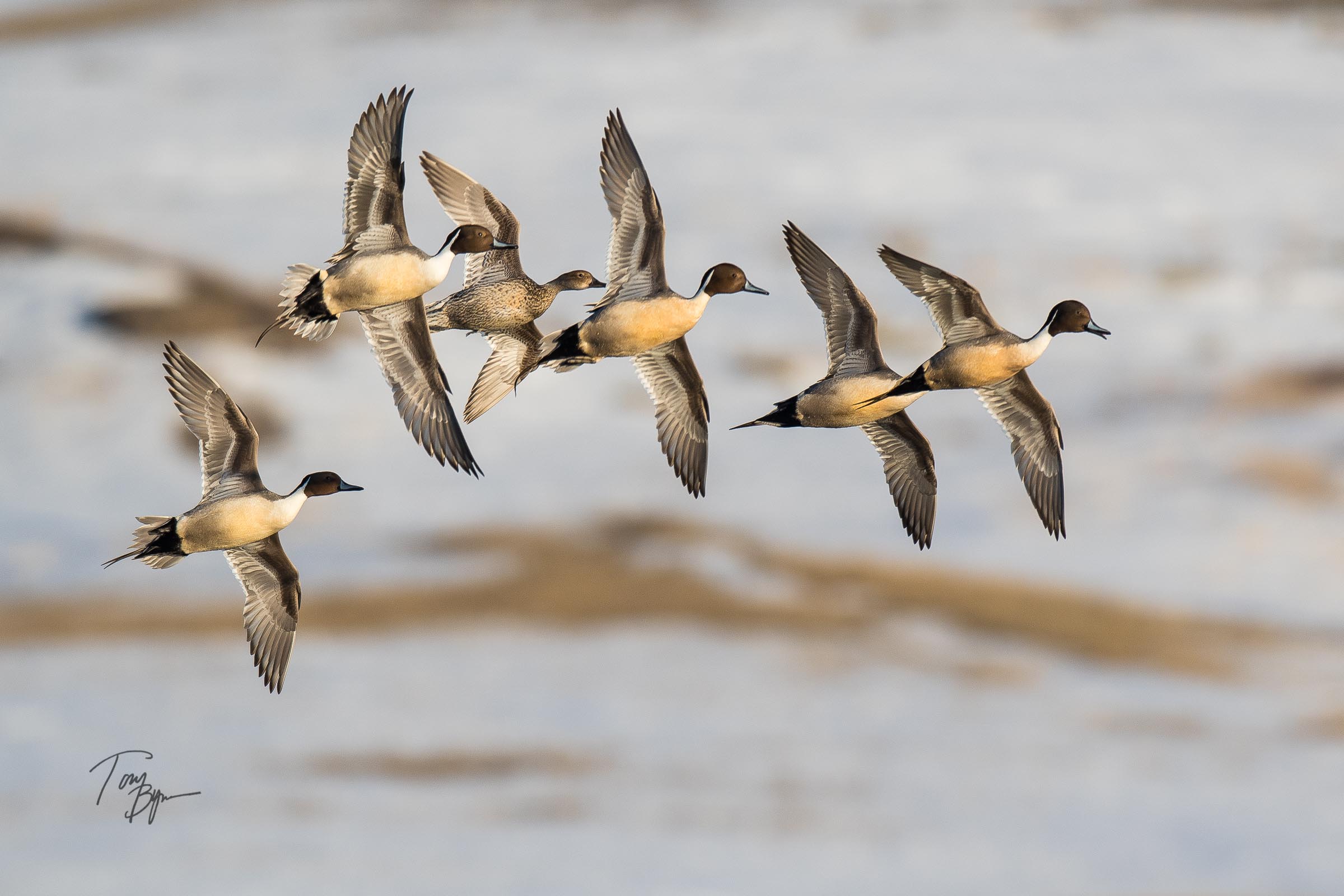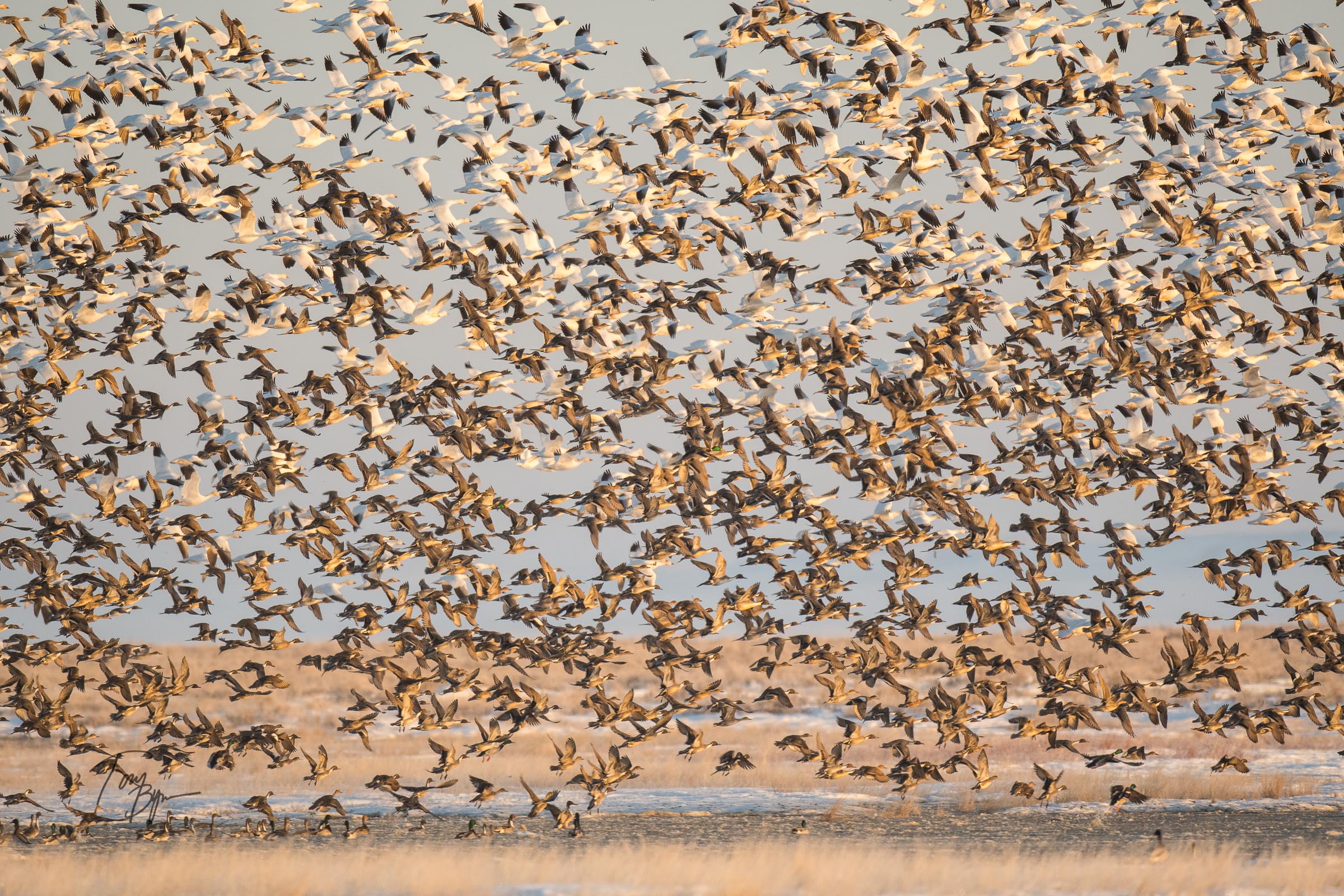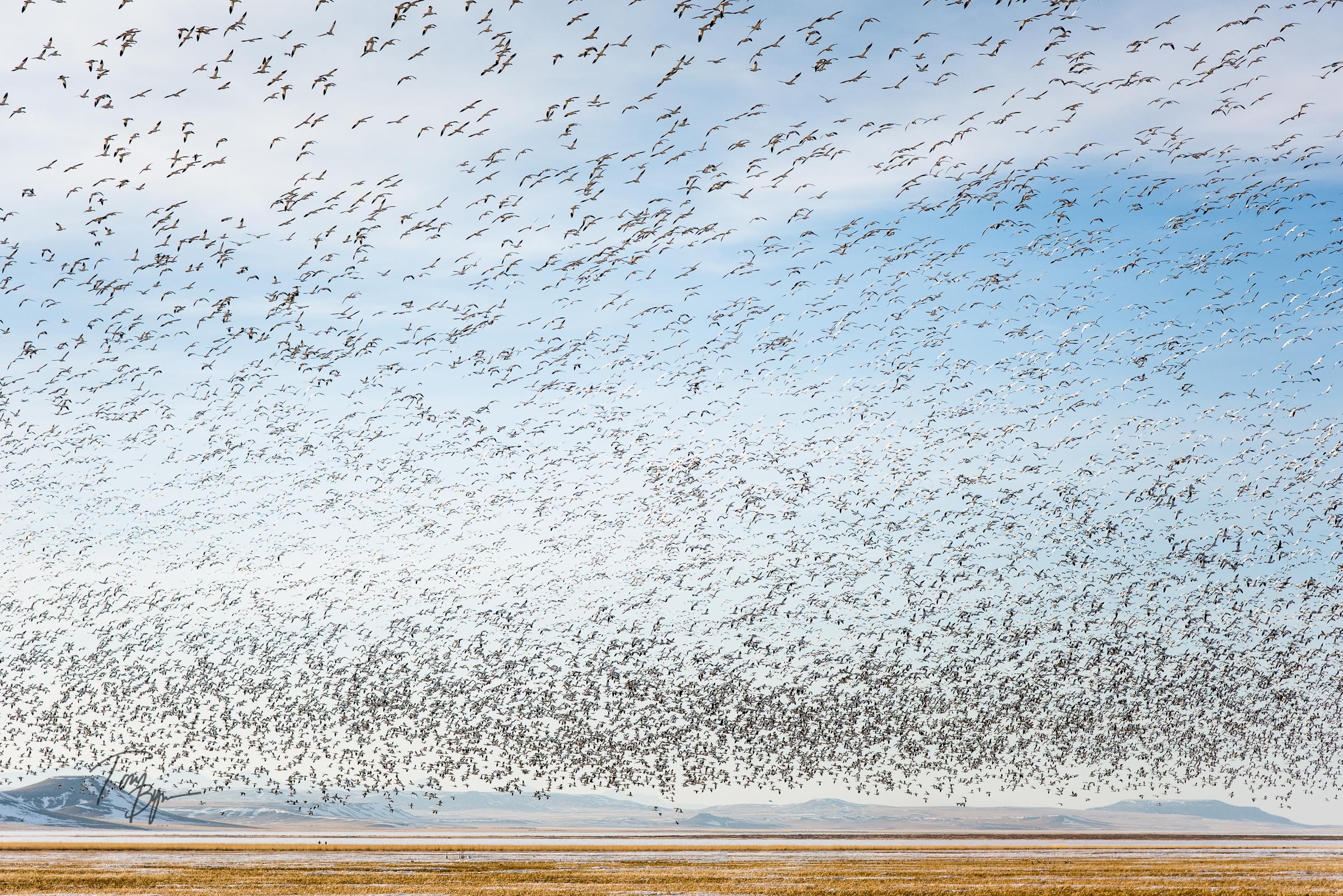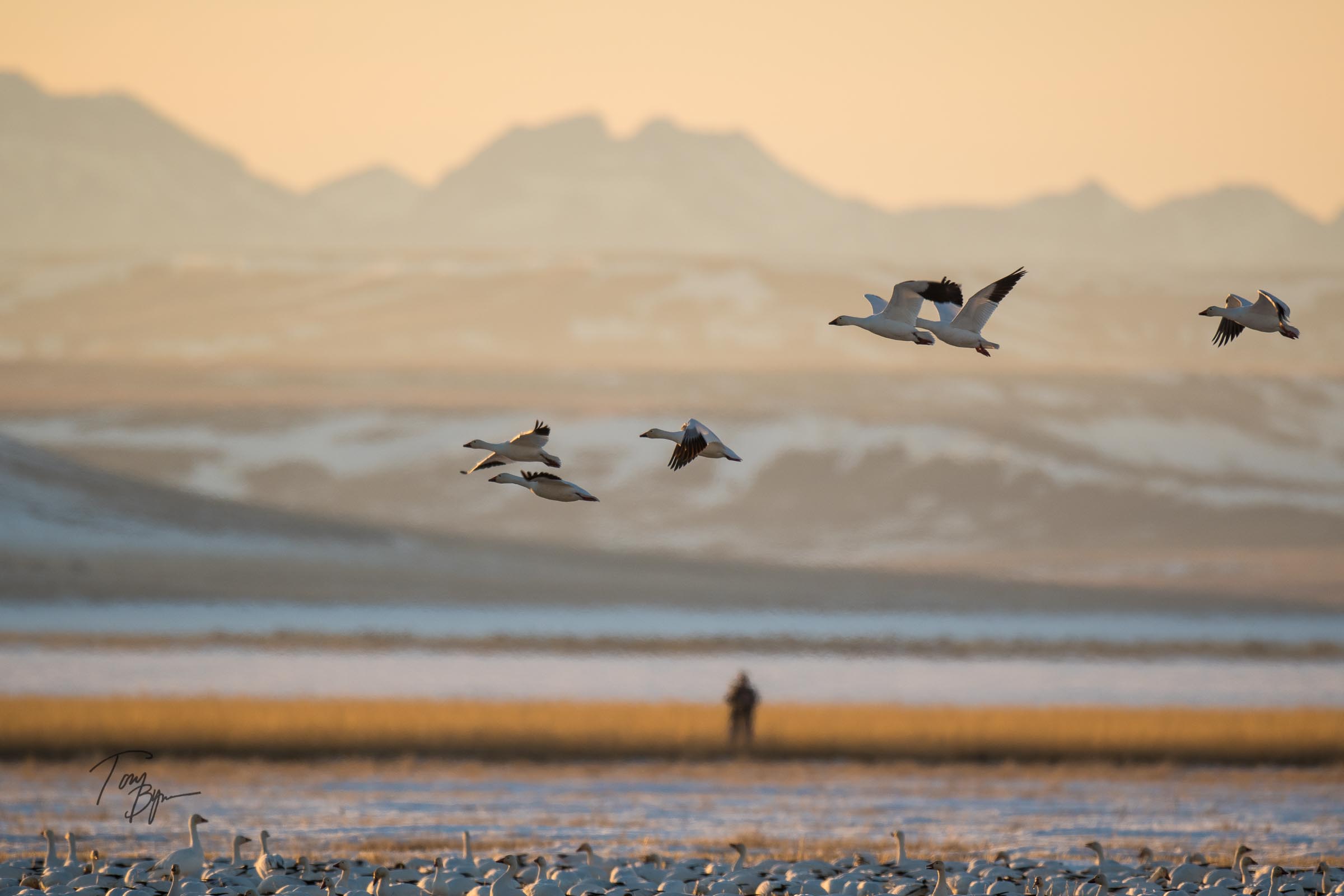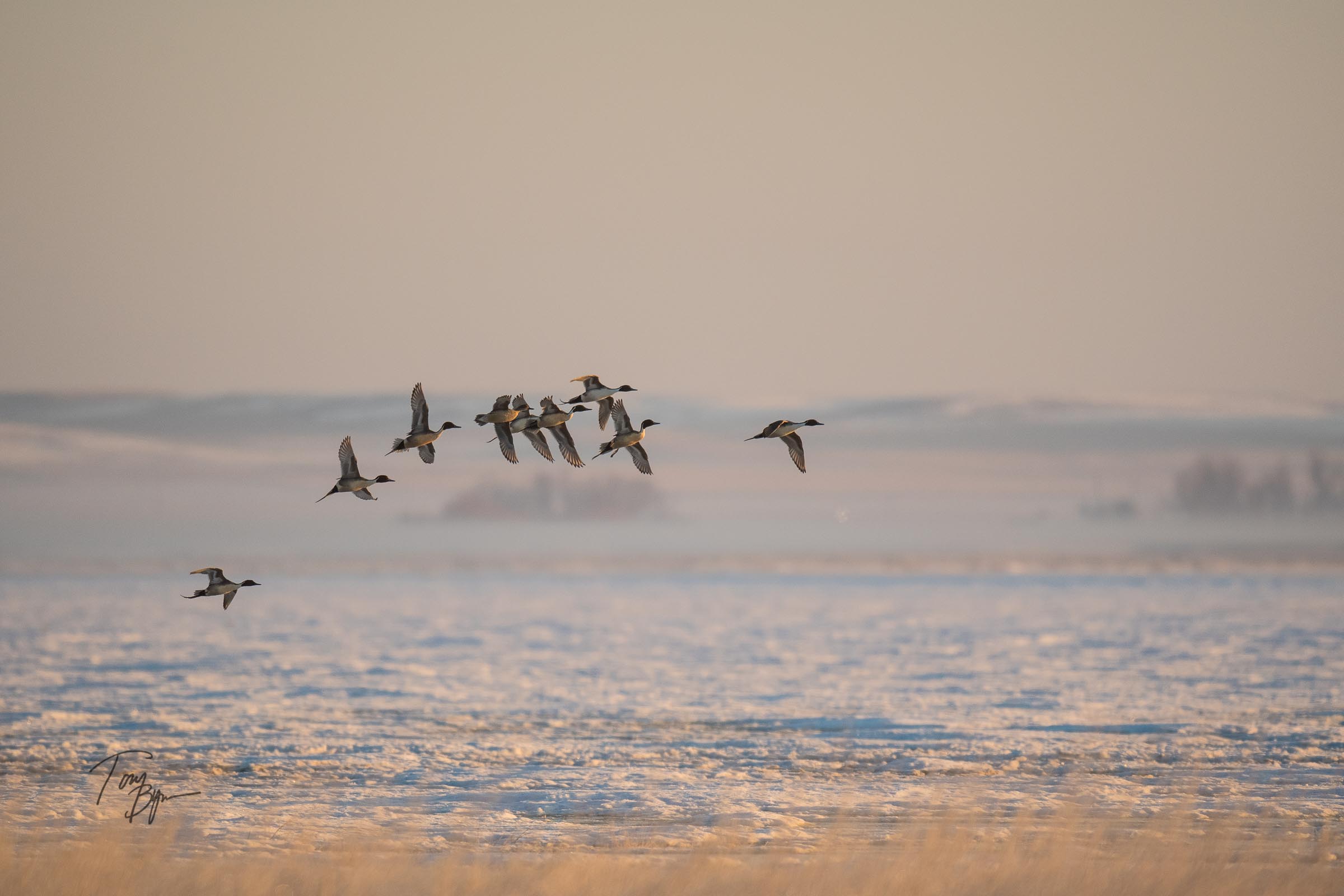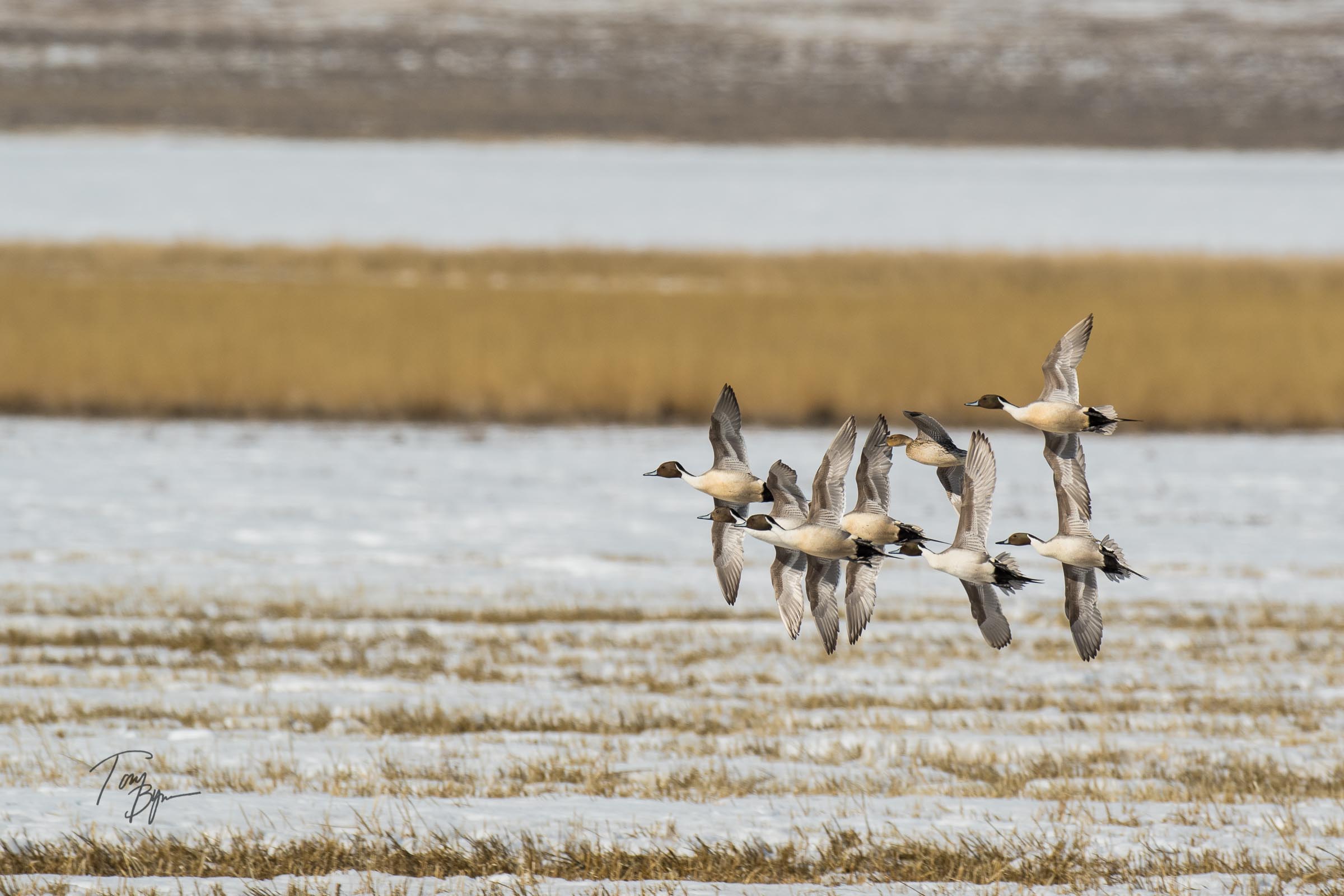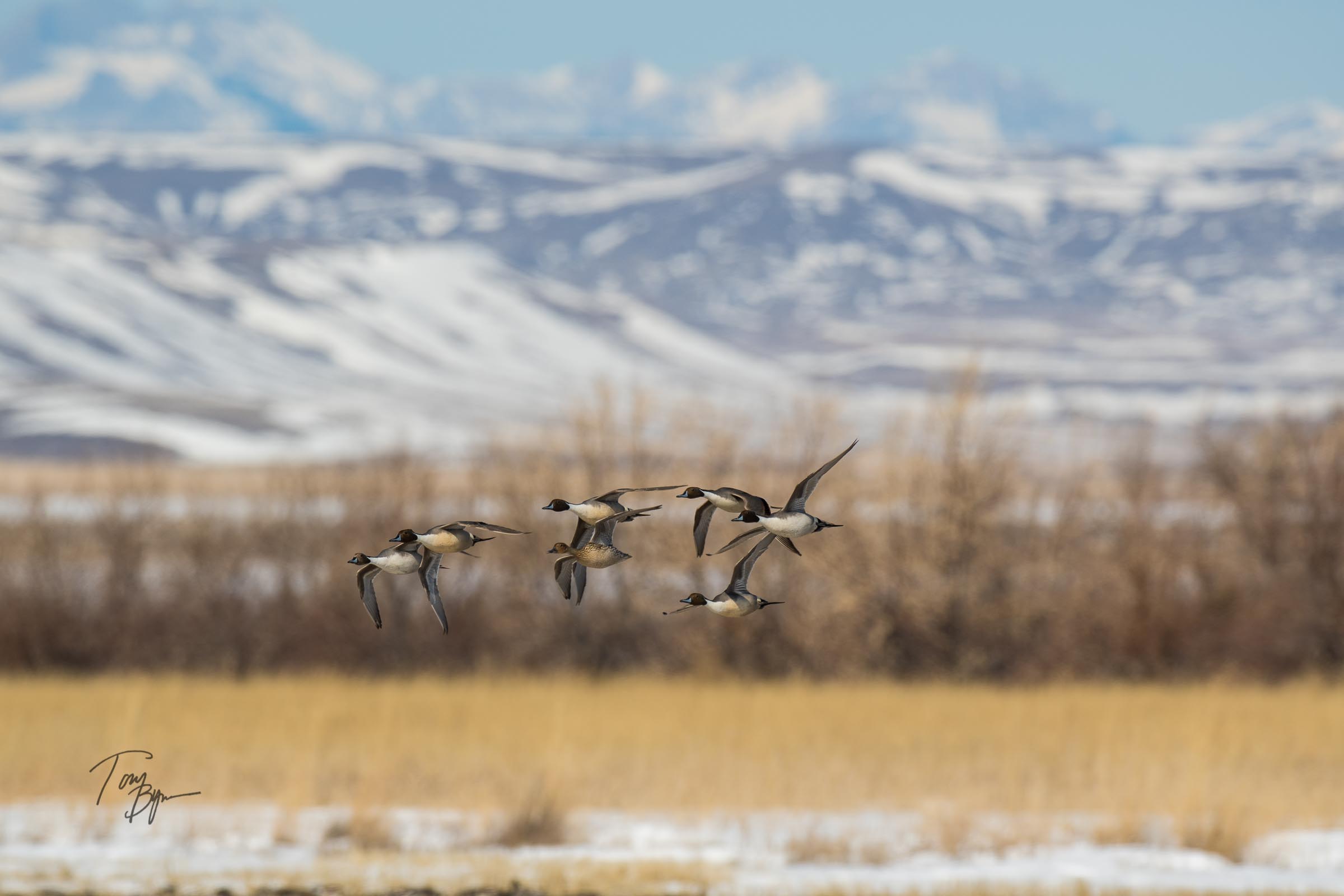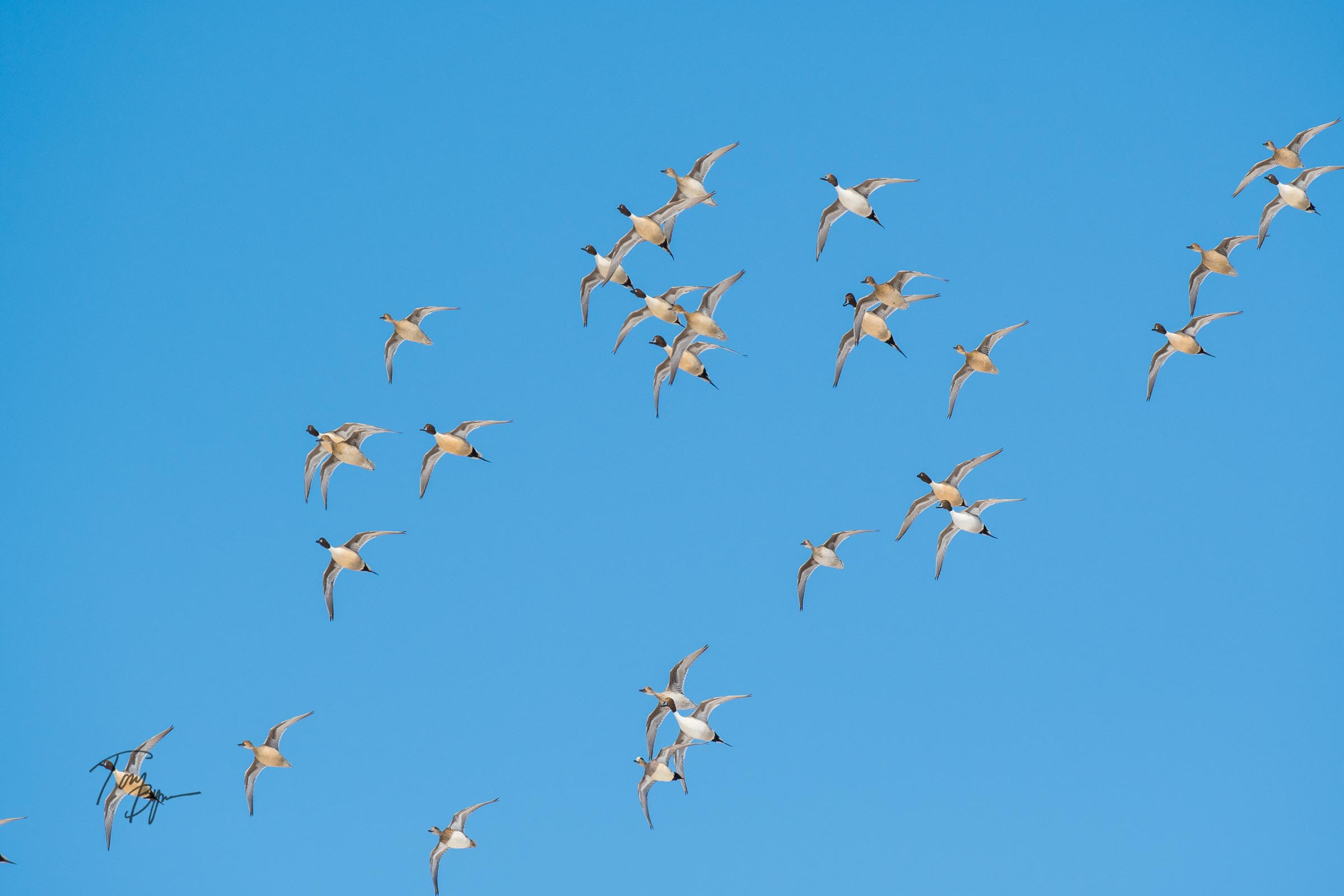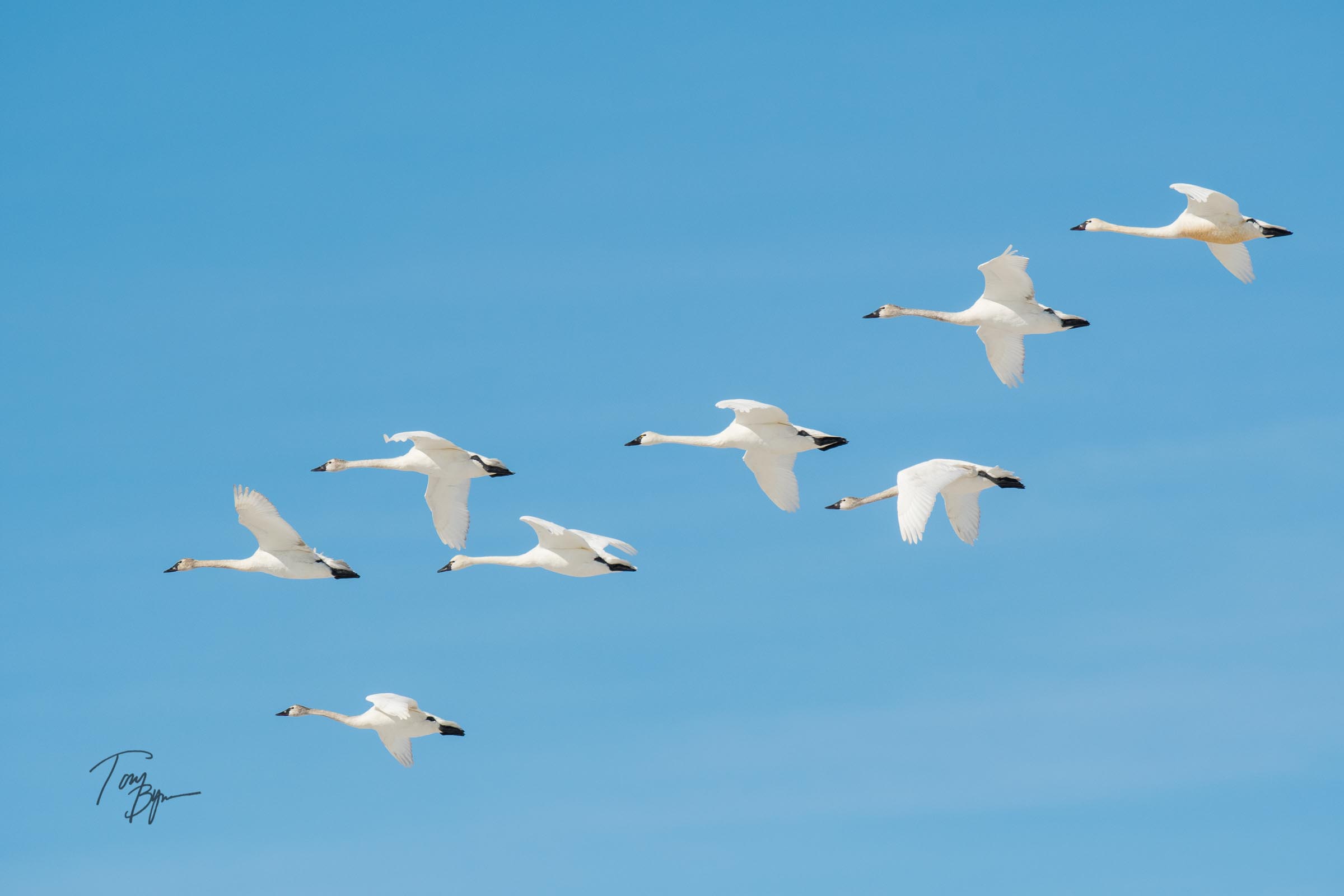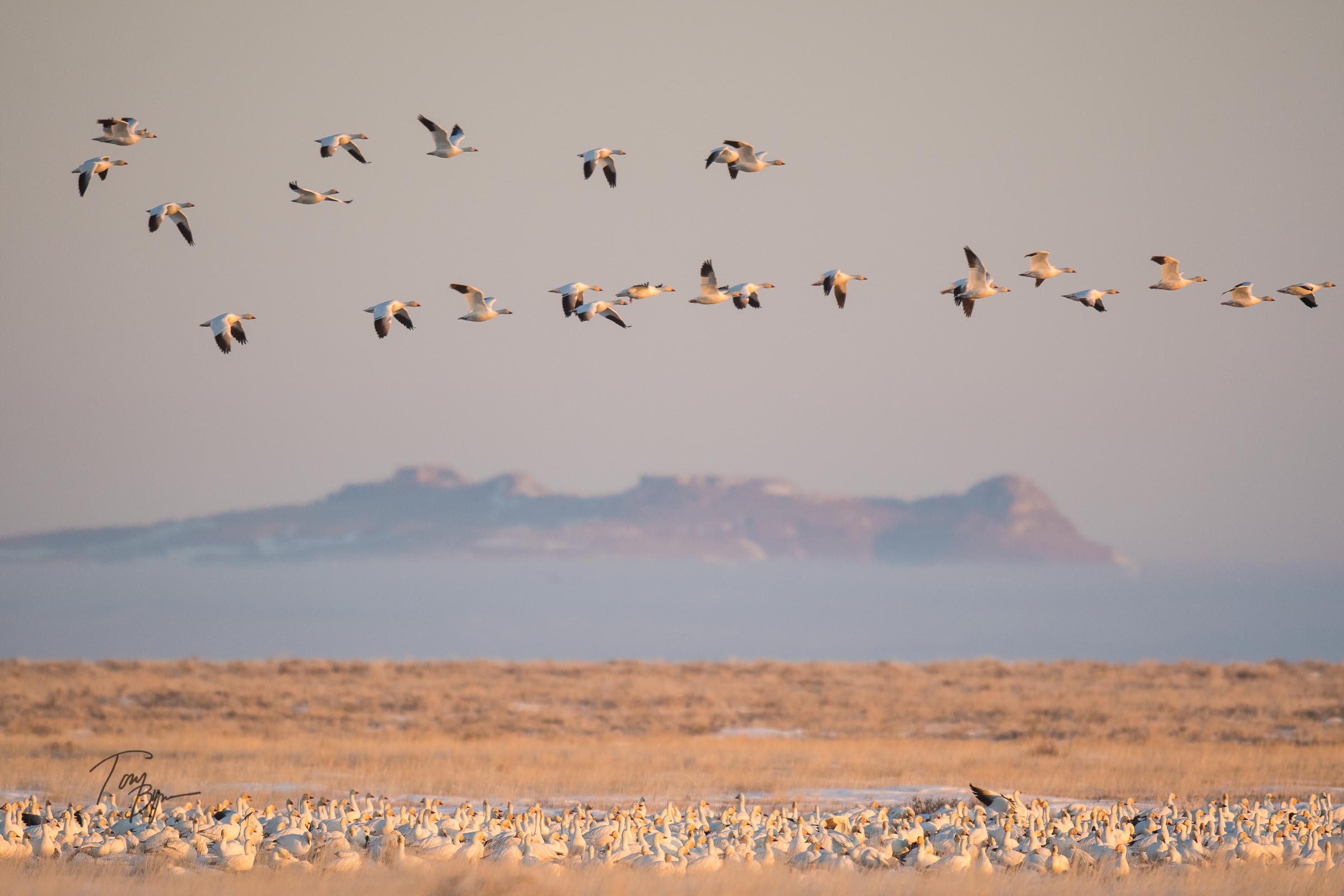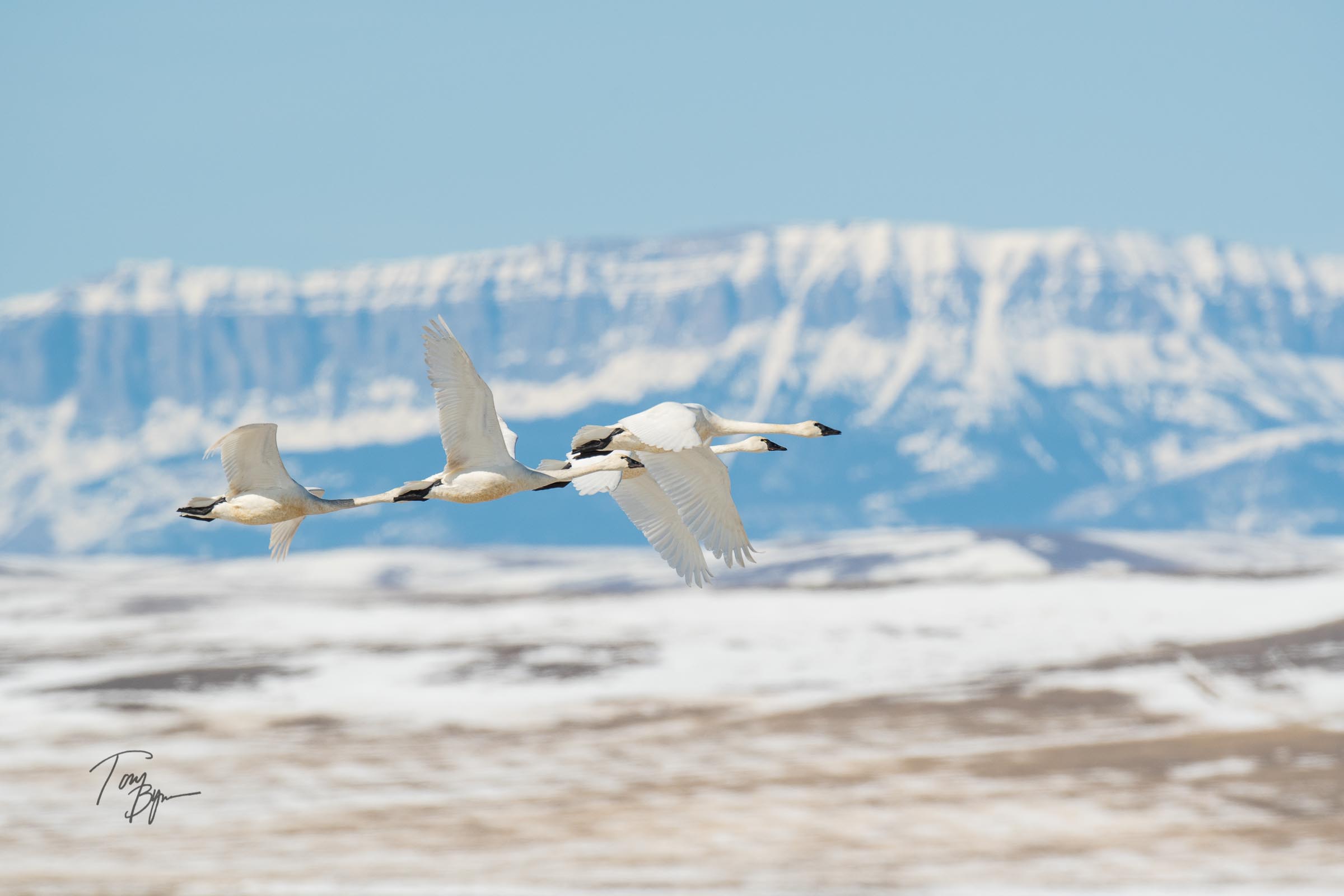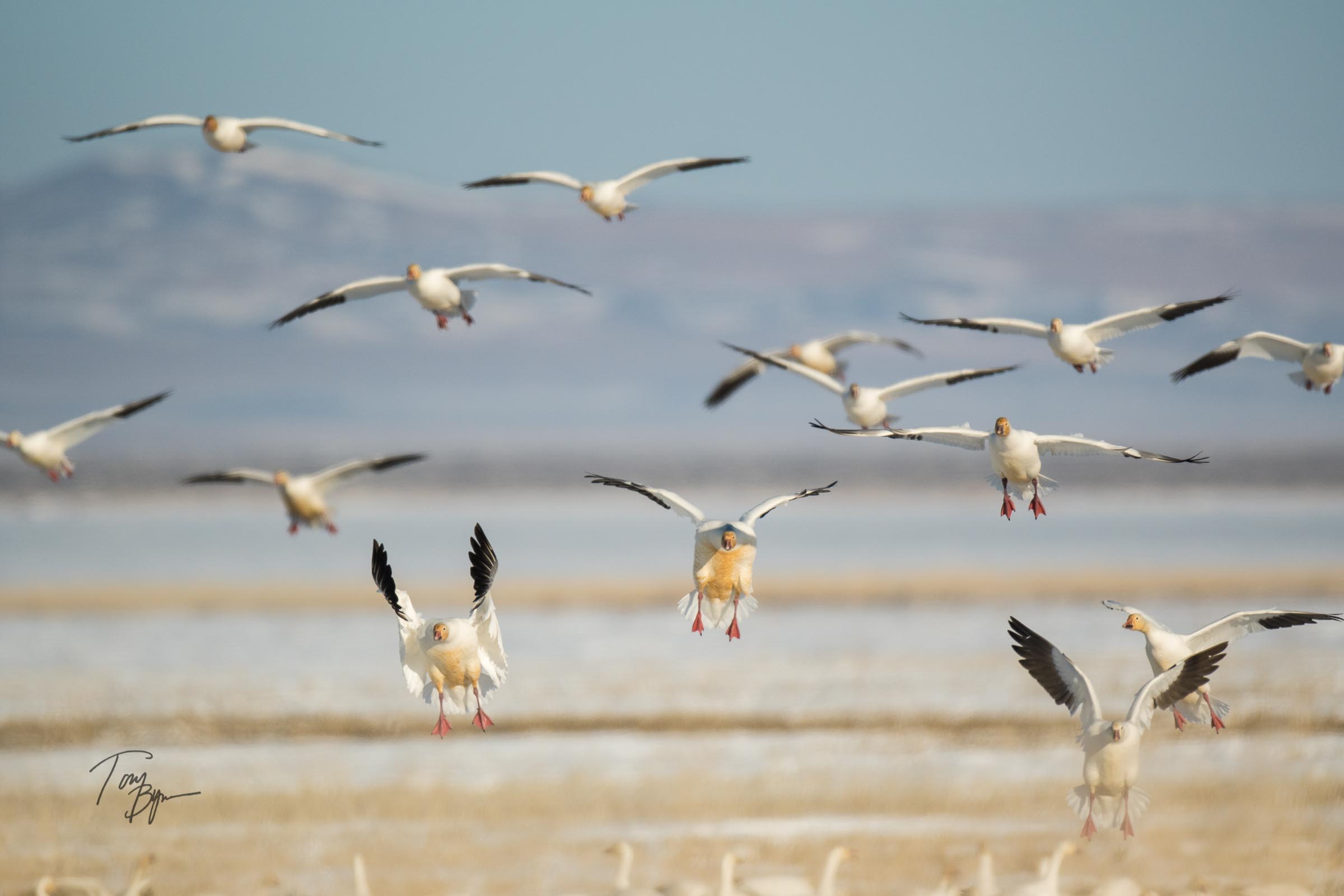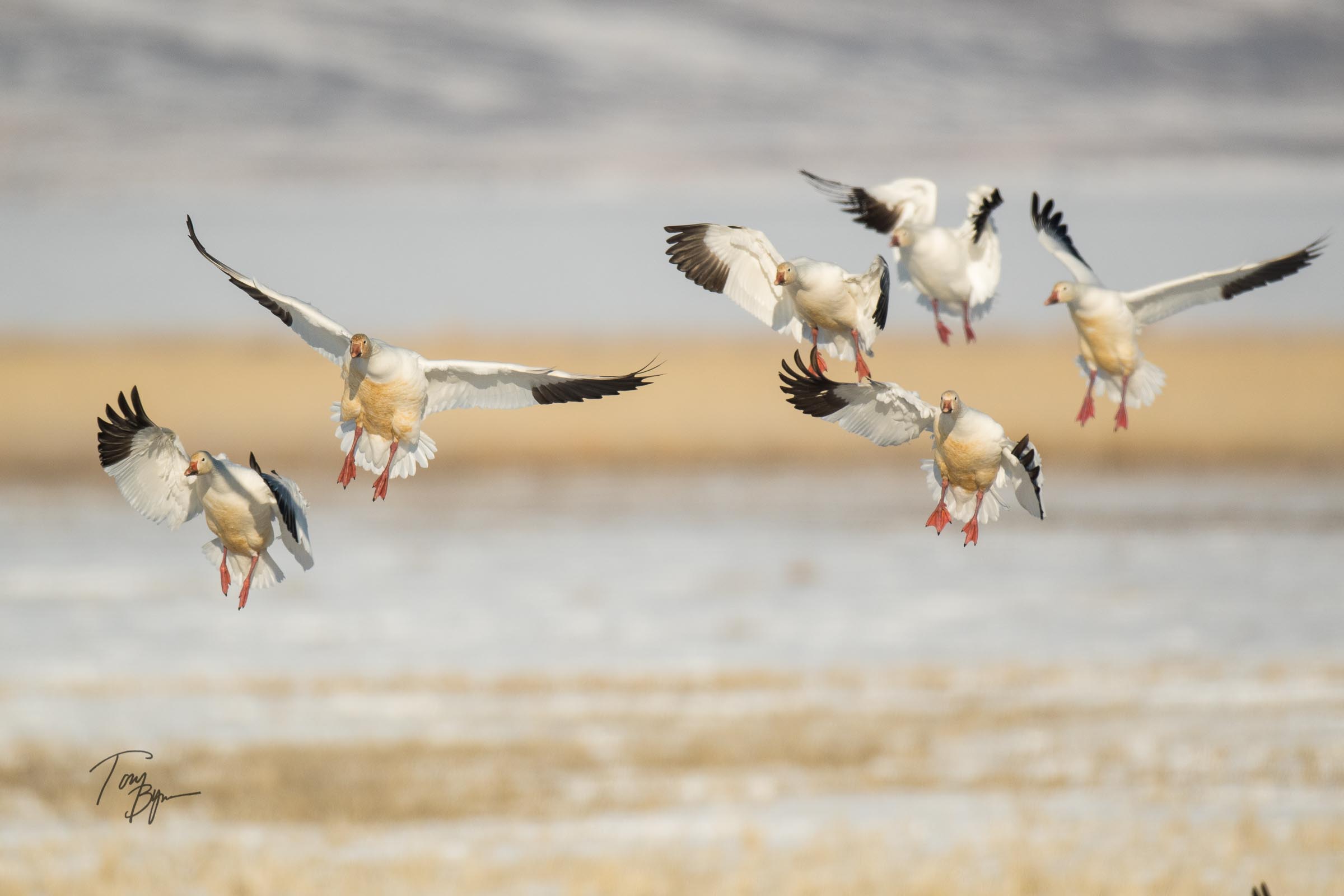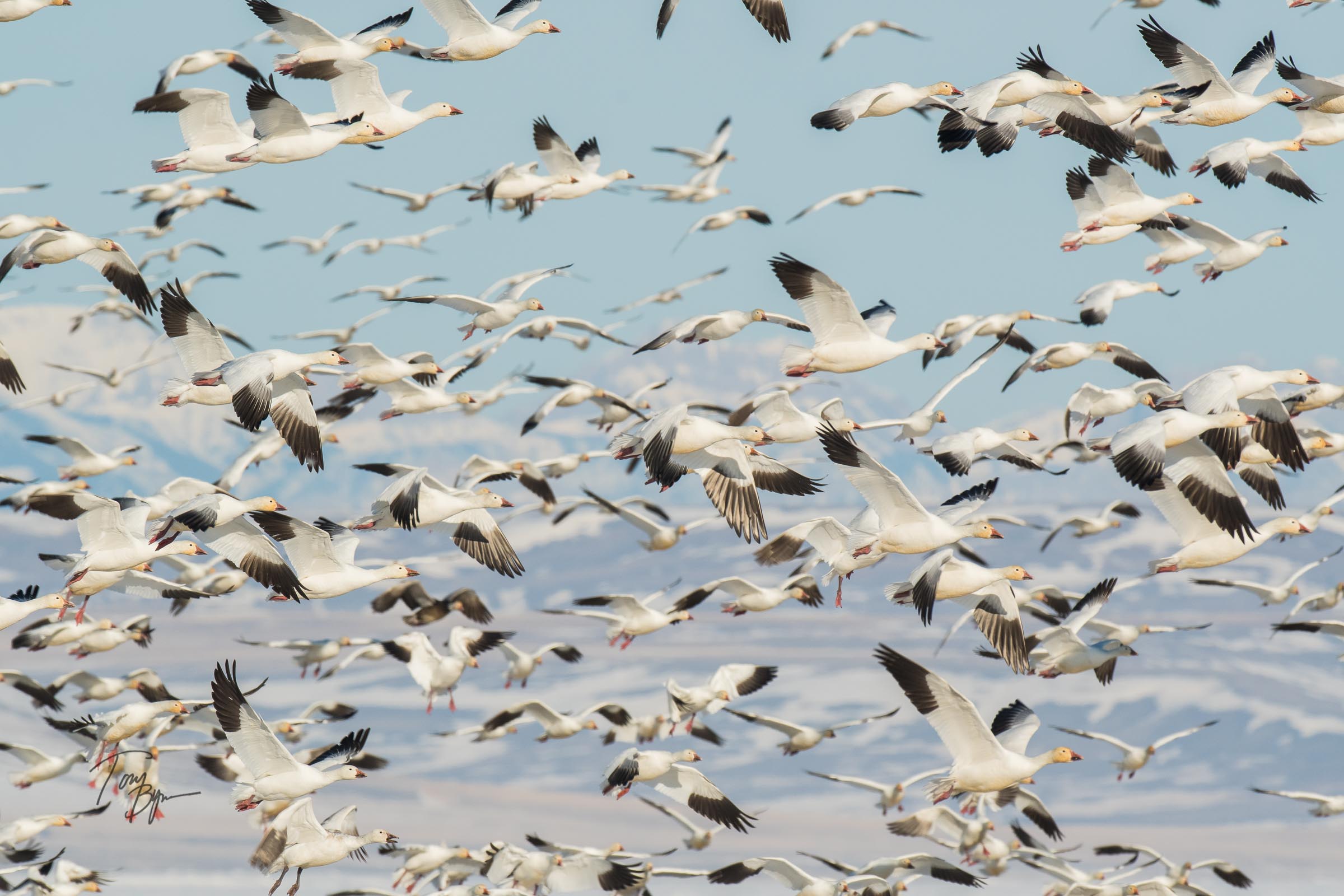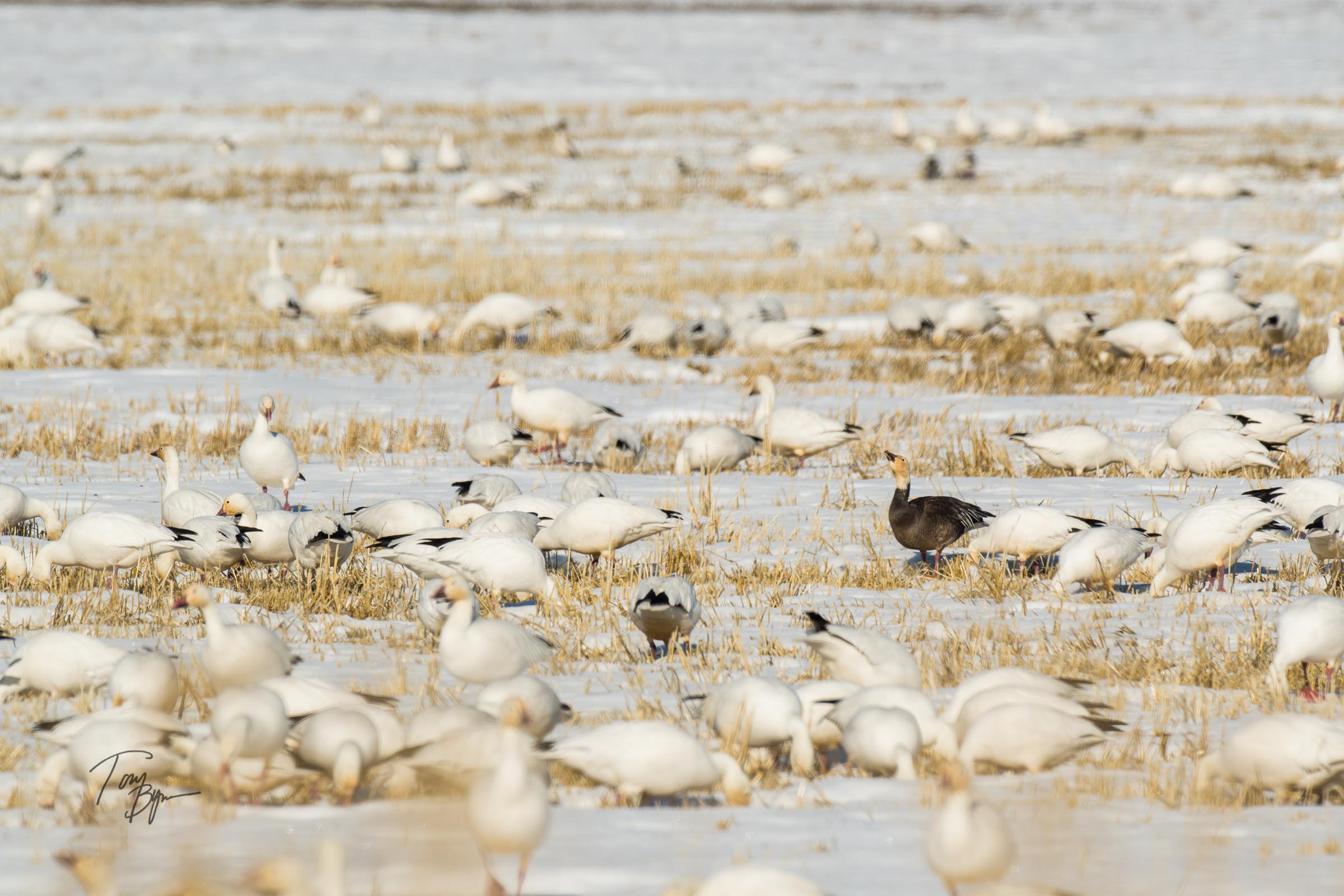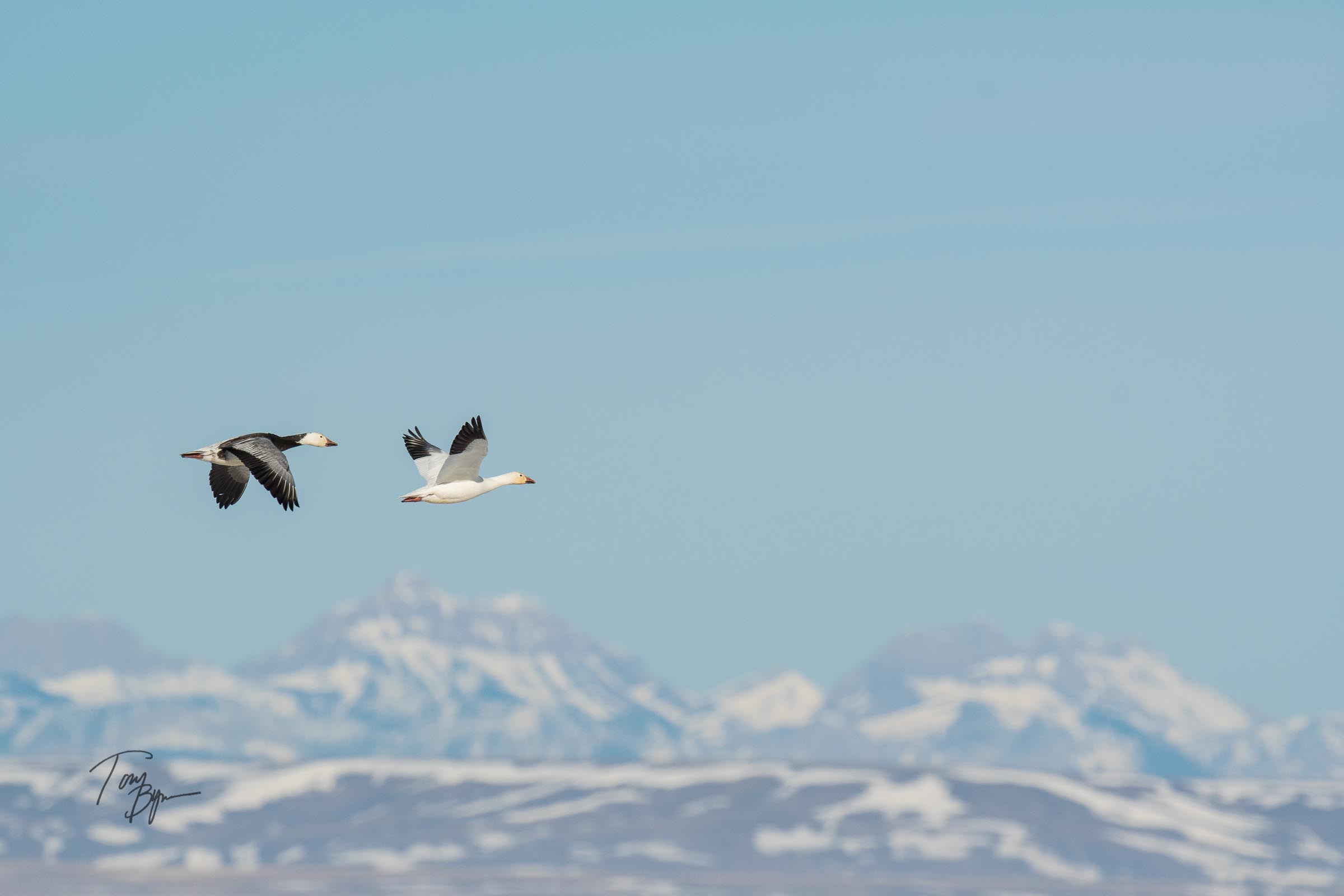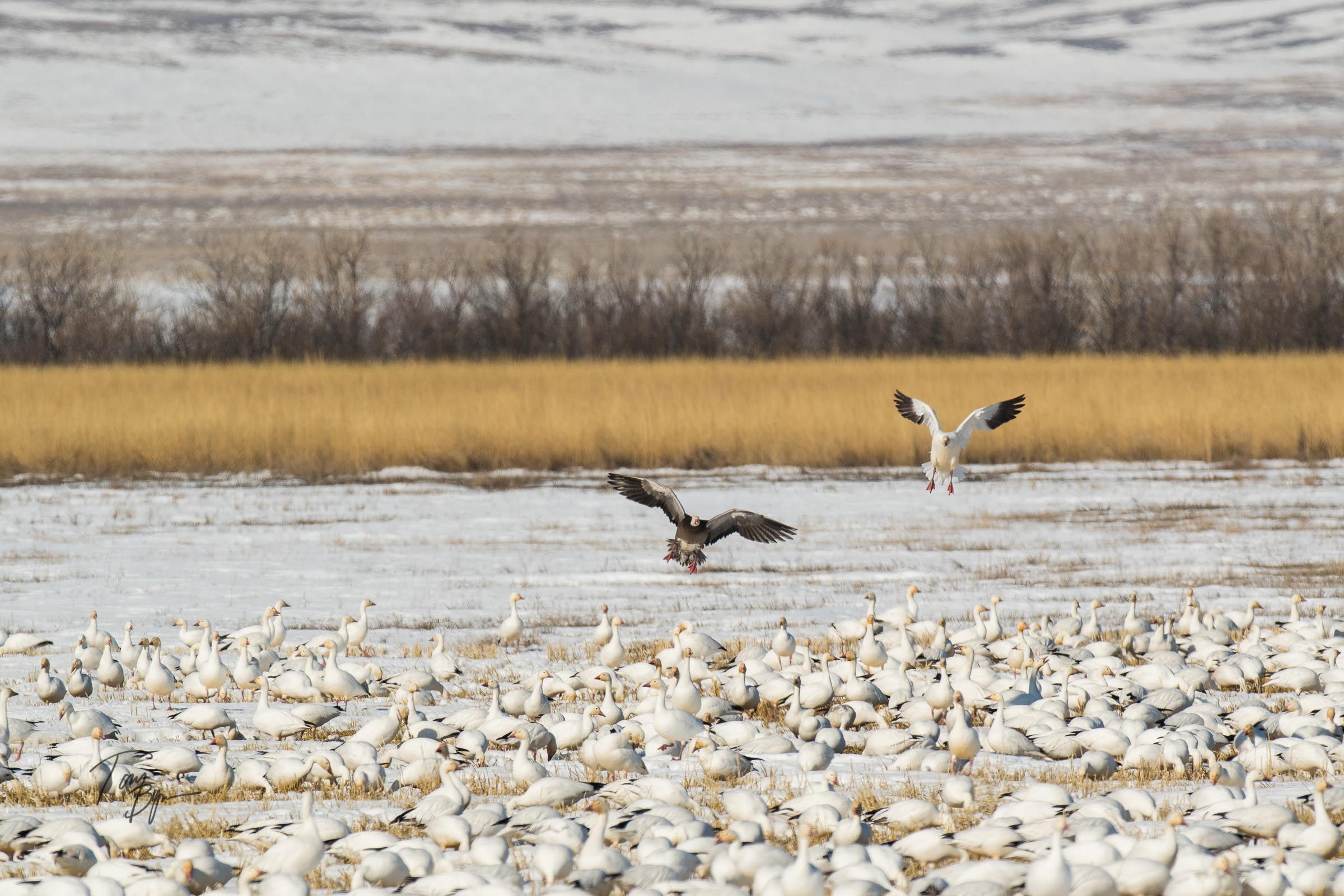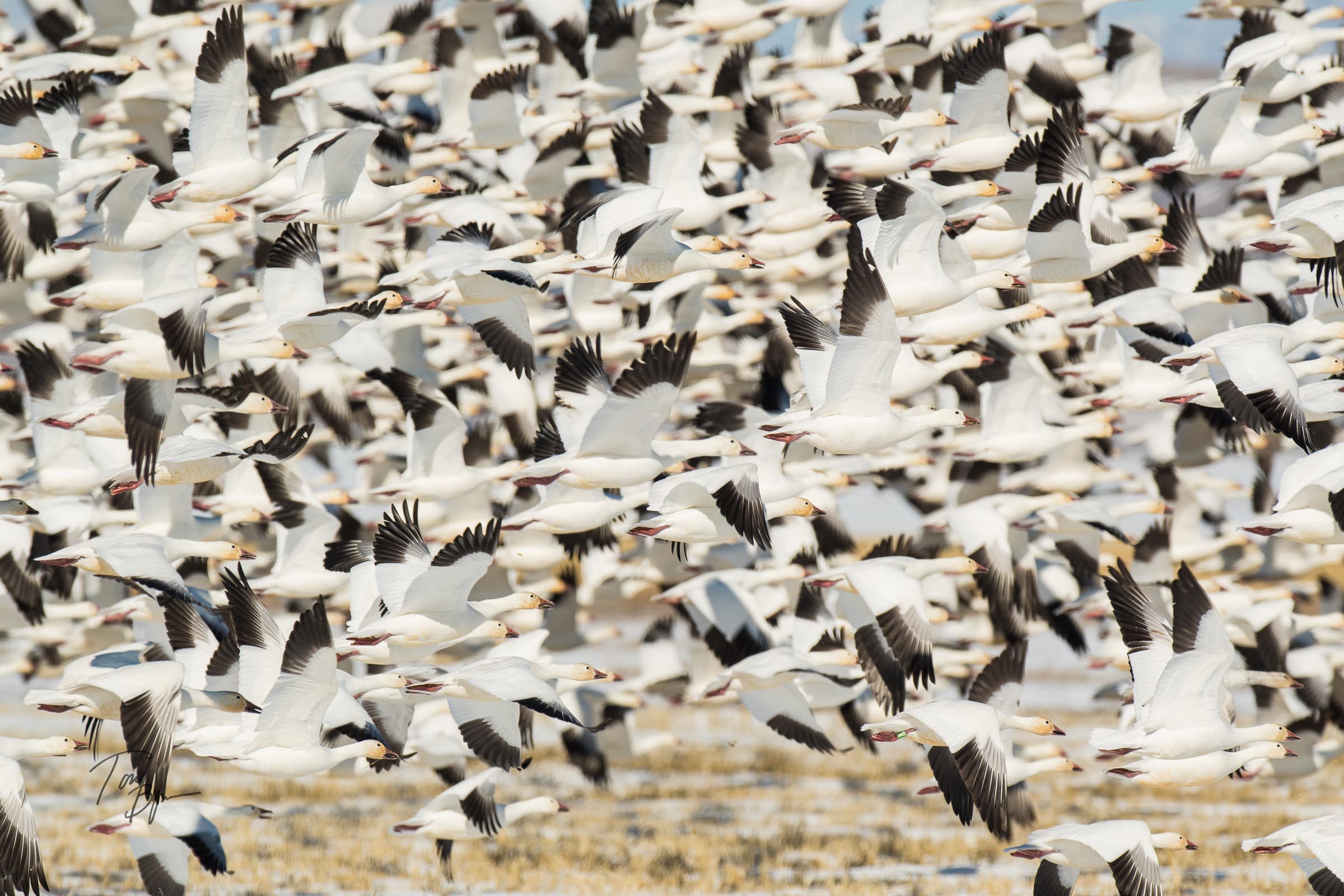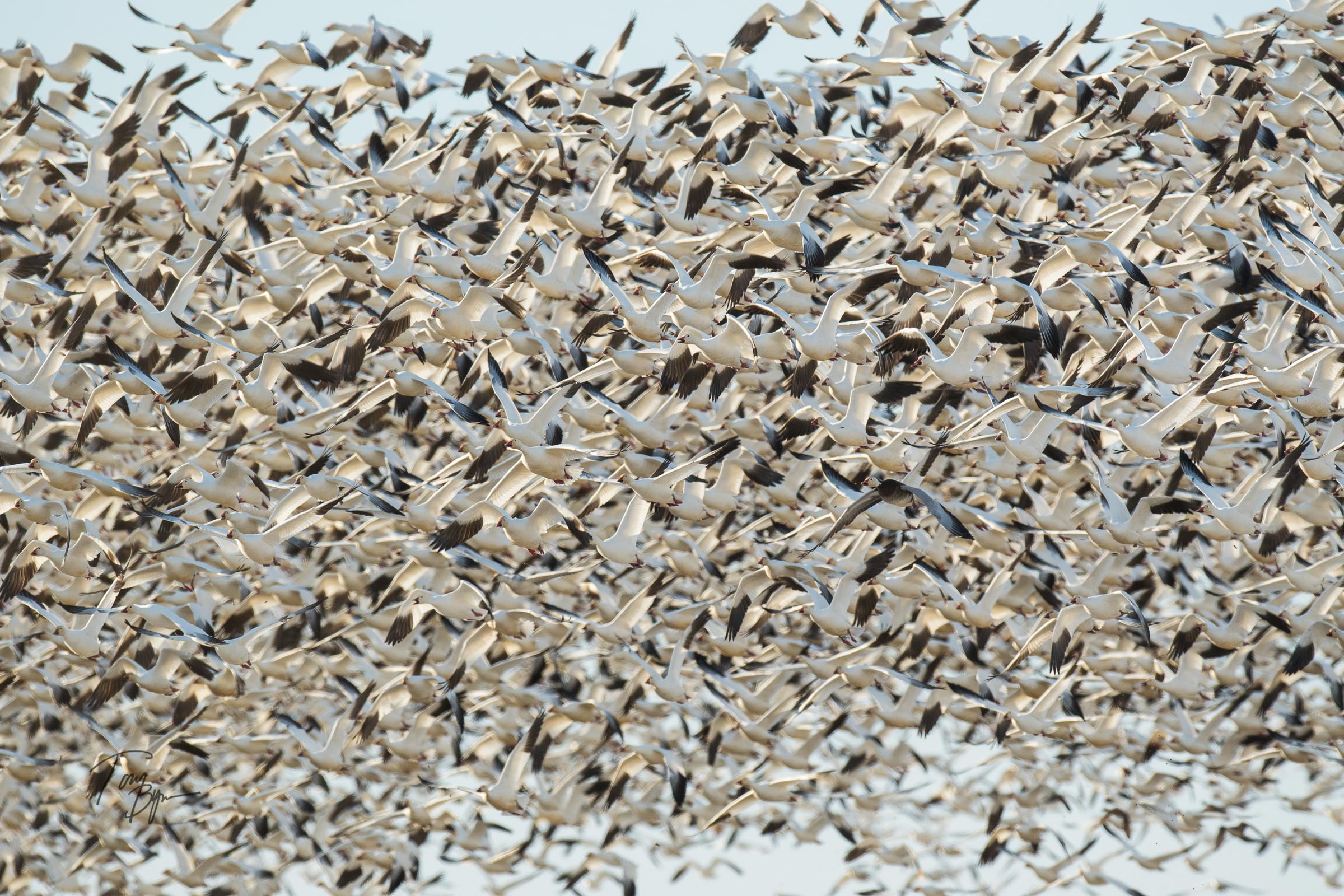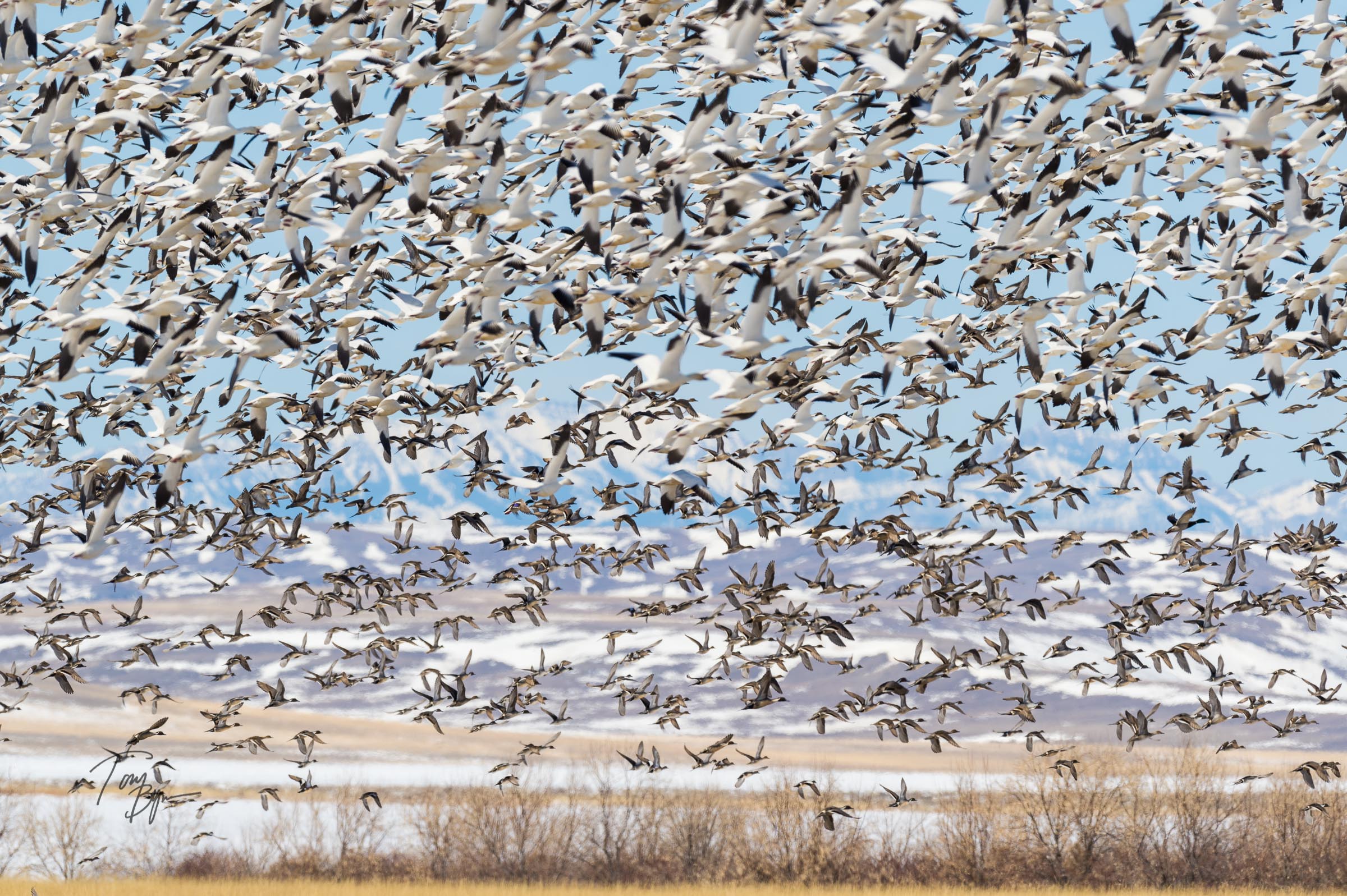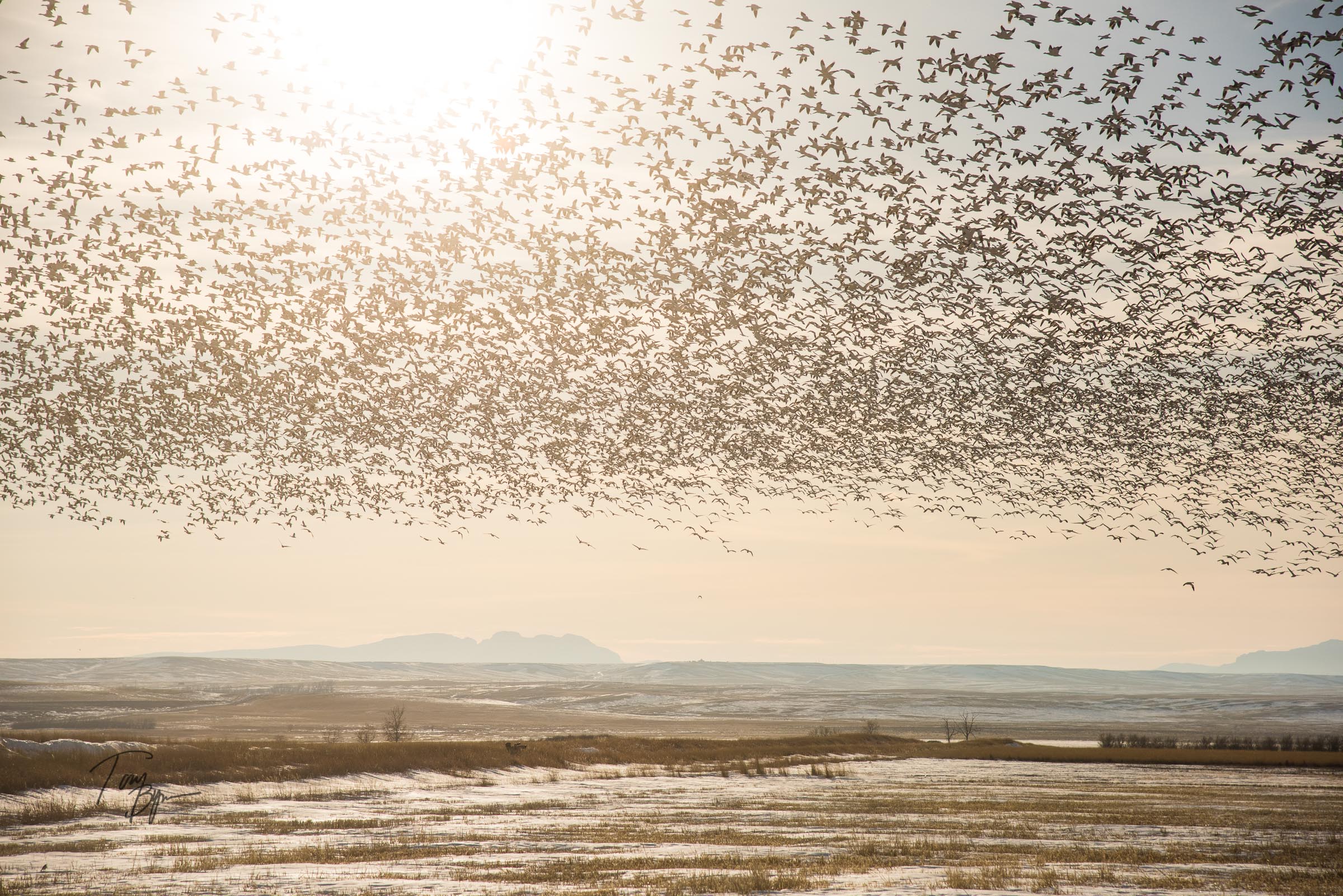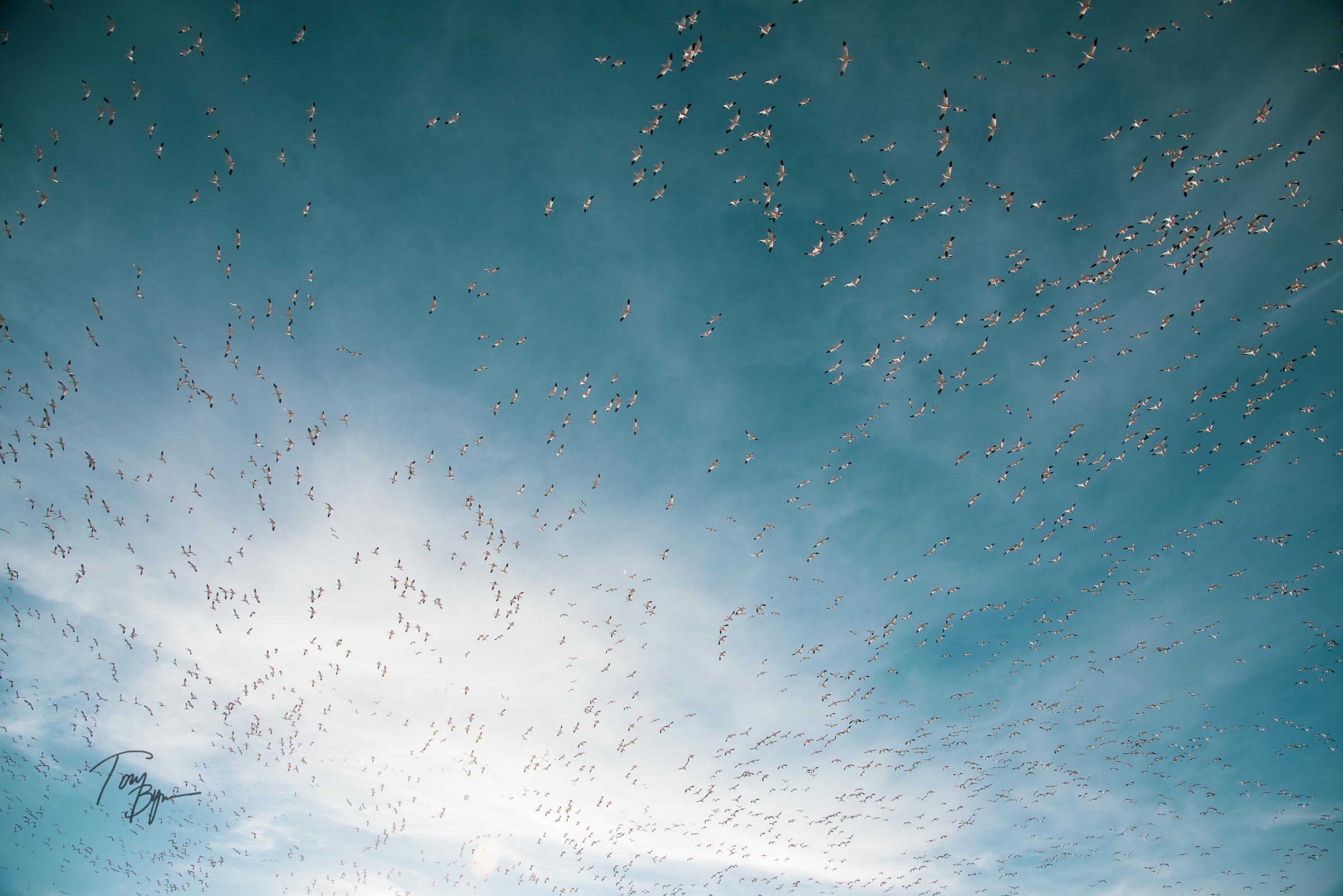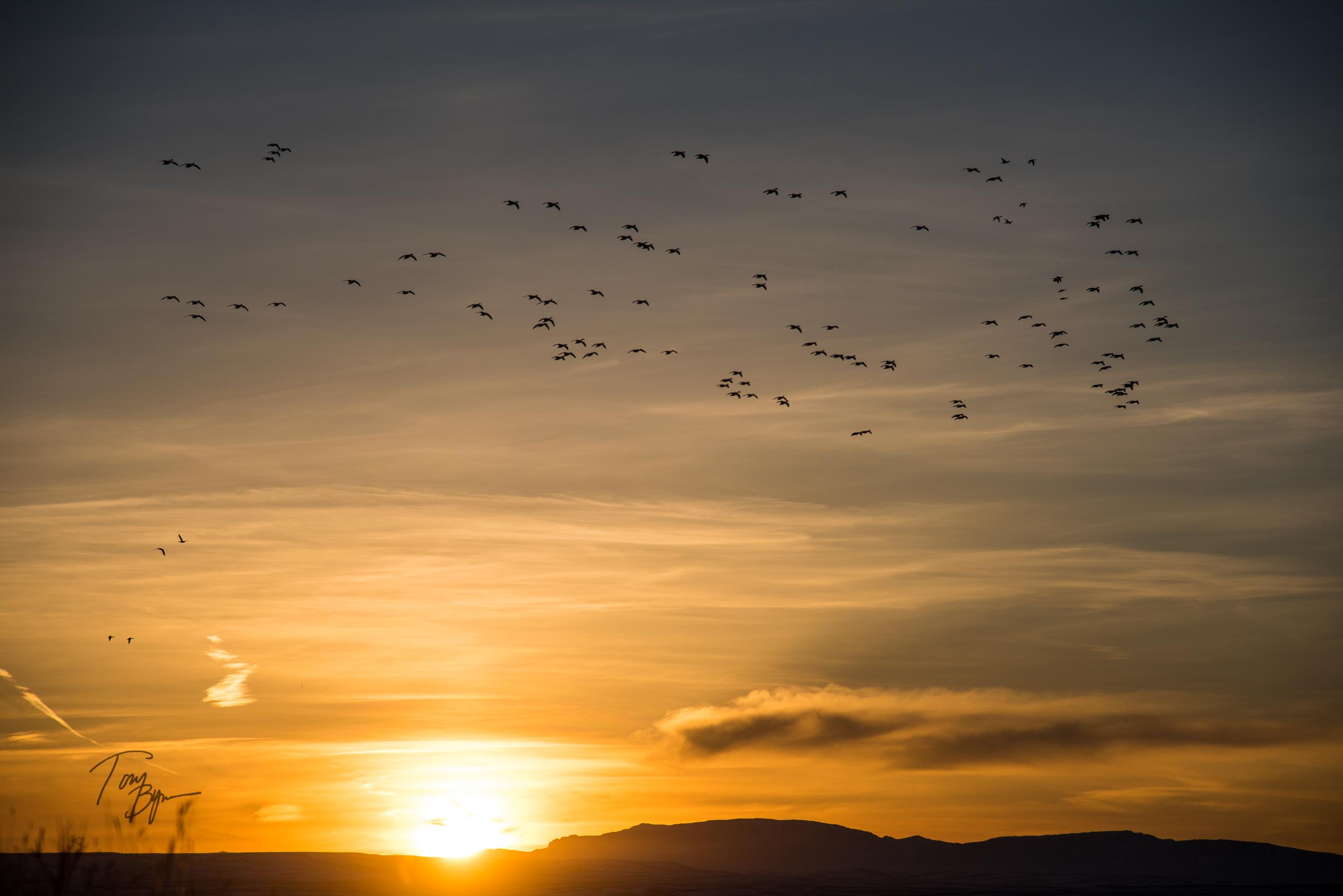Who needs a Commercial Film Permit in a National Park - Still Depends
Filmmaker and producer Tom Opre films a hunting scene in central Montana. Tony Bynum Photography
Who needs a commercial film permit in a National Park? Well, for now, no one, concludes one federal judge, and now the National Park Service (NPS). As of February 11, 2021, the NPS website (confirmed by me in a message left on my phone by a representative of the NPS) no one needs a permit.
As of January 22, 2021, the National Park Service is no longer collecting application or location fees, or cost recovery for filming. NPS Website (confirmed by the NPS in a message left on my phone on February 11, 2021).
Remarkably, as of today, the NPS is NOT issuing or even asking for you to fill out a permit application. Wow. I’ll say it again, Wow!
Judge Colleen Kollar-Kotelly Rulling
Judge Colleen Kollar-Kotelly of the U.S. District Court for the District of Columbia declared that the statute and enacting regulations that require those engaged in “commercial filming” to obtain permits and pay certain fees are unconstitutional. The court also found that the permit rules restrict speech in public forums, including the many National Park locations that are already considered traditional public forums such as the National Mall. The court found that the rules were content-based restrictions on speech, subject to strict scrutiny. Likewise, she found, the regulations and underlying reasons offered by the government—namely obtaining a “fair market” payment on top of any administrative costs—do not meet that scrutiny. “The government may not impose a charge for the enjoyment of a right granted by the federal constitution, including the First Amendment right to free expression.” Judge Kollar-Kotelly wrote.
"Mr. Price’s filmmaking at these parks constitutes a form of expressive speech protected by the First Amendment," she writes in the opinion, adding "the creation of a film must also fall within the ambit of the First Amendment’s protection of freedom of expression. To find otherwise, would artificially disconnect an integral piece of the expressive process of filmmaking."
The Judge said that her ruling applies to National Wildlife Areas and public lands administered by the Bureau of Land Management. Her final statement leaves room for a new permit and fee system possibly based on other criteria.
In issuing this injunction, the Court observes that a more targeted permitting regime for commercial filming, which is more closely connected to the threat posed by large groups and heavy filming equipment, may pass constitutional muster in the future.
You can the entire decision here: Judge rules film bill unconstitutional.
How does this apply to the Department of Agriculture - Forest Service?
This is a hard question to answer directly. I can tell you that after my recent call with a Forest Service supervisor they told me “we’re looking into it, and are not sure how it’s going to affect our permit program.” My guess is that the USFS special use permit program WILL be affected and will be reworked.
What NOW?
Going forward:
I recommend anyone engaged in commercial filming call their local park service, BLM or National Fish and Wildlife Service office for the latest. I suspect at some point there will be a new permit system for commercial filming in National Parks and other federal public lands.
I also recommend that if you’re planning a shoot on Department of Interior lands (BLM, NPS, FWS), you do your level best to follow all other rules and regulations. I would avoid filming in popular/busy locations and I would do everything I could to avoid displacing wildlife, other people, damaging any resources, and absolutely DO not trespass!
Call your senator and representative and tell them you heard about the ruling and you would like to know what they plan to do. Ask them to please look into it, and better,
I can’t tell you what to do if you have content already in the can that you captured without a permit.
Current Film Permit Podcast - Tony Bynum and Brian Call a.k.a, “Gritty.”
Tony Bynum and Brian Call discuss Filming on federal Public lands and the recent federal judge’s ruling that current film permits and fees are unconstitutional and issued an injunction.
Other sources
The National Press Photographers Association (NPPA) has been leading the legal charge on changing the federal permit program. I found its article helpful and interesting to read. And the Kurt Repansheck over at the National Parks Traveler sight did a great write up as well.
Wild Sheep - YETI presents "Wild Sheep" Table Top Book
Yeti Presents “Wild Sheep” a brand new oversized, full-color tabletop book about wild North American sheep and the people who pursue them. 150 plus pages of stories and incredible photography by Tony Bynum, Adam Foss, and many more.
One of Tony Bynum’s many images published by YETI in the book, “Wild Sheep”
On Friday, November 13, 2020, YETI released “Wild Sheep,” an inspiring dive into the life and times of the North American wild sheep and the people who peruse them. 150+ pages of stories, drawings, and photographs, this table-top book is certain to find a top tier spot among the annals of sheep hunting literary history. #yetipresentswildsheep
From YETI -
“Sheep hunting is the most pinnacle big mountain hunting pursuit. It is the aspiration of any mountain hunter to get an opportunity to one day hunt wild sheep. This activity is aspirational for a few reasons. First, wild sheep are extremely rare. Many species of wild sheep were near extinction in the early 1900s. However, through the efforts of conservation and primarily hunters, wild sheep populations have dramatically rebounded. Another reason this pursuit is held in such high regard is that wild sheep live in some of the most remote and beautiful places in the world. So the experience of hunting a wild sheep is not only incredibly beautiful, but also incredibly challenging. Sheep hunters backpack hunt for 7-10 days in extreme remote wilderness with limited access to the outside world. If you go on a sheep hunt, you will be put through some of the most adventurous mountain experiences humans can be involved with. This book is meant to encompass everything sheep hunting is about – an incredible species, incredible places, and extremely unique people conserve both of those rare elements. Books are for sale on YETI.com as well as an extra 250 Limited Edition books that are currently available through the Wild Sheep Foundation, with all proceeds benefitting their efforts. All purchases made at wildsheepfoundation.org enter you for a chance to win a sheep hunt guided by Midnight Sun Outfitting and photographed by Adam Foss. The winner of the Hunt Giveaway will be announced during the virtual 2021 Sheep Show which will take place from January 11th-16th, 2021.”
The YEIT “Wild Sheep” book will forever find a special place in my library of published works. YETI chose to use about a dozen of my images. From Dall sheep to desert sheep hunting and beautiful landscapes, the photography in this book is up there with the best. Probably as important to me as having my images in the book is being a part of the early discussion about how the book should look and what it should contain. The credit for the heavy lifting goes to Adam Foss for staying focused on its production even while he would have rather been out hunting or photographing sheep hunts.
YETI’s contribution, along with the commitment of the Wild Sheep Foundation together made this one-of-a-kind book, sure to be a collector’s item, possible. Thank you to YETI and the Wild Sheep Foundation for bringing these stories to life. Putting and keeping sheep on the mountain. Proceeds from the book will go to benefit wild sheep.
Tony
Spring bird migration from Montana - the birds this year were flighty!
The spring bird migration in Montana has been literally, flighty. Birds came and left so fast this year if you were not in the field waiting, you missed it. The numbers, as far as I can tell are down too. While I do have a Masters Degree in Science, my counts were not scientific, purely anecdotal and based on my 15 our so years of watching the spring bird migration along Montana’s Rocky Mountain Front. I’m sure there’s a reason the birds were quick and more elusive this year, but I can only speculate.
A cloud of mostly snow geese, with a few ducks mixed. © Tony Bynum
Three white snow geese landing in a farm field, in what looks like an orchestrated ballet. ©Tony Bynum
Where did the ducks and geese go?
I have to admit, I’m not a “birder,” or even a hard core duck guy. I don’t study the numbers and I’m not watching scientific trends as some of my more ardent waterfowling friends do. I like to photograph ducks and I’ve always like the idea that good ducks populations means good habitat, and good duck habitat is good for everything. Today, there are many variables that could affect ducks populations and their habits.
Montana winters are cold, but this past February was cold even by central Alaska standards. Parts of Montana had a February average temperature of minus one degree fahrenheit! We had low’s in the negative 40 range and weeks where we never broke zero. All of this culminated in one of the deepest freezes we’ve seen in recent memory. The earth froze deeper than usual, and the lake ice thicker than average.
Canada Geese with thick ice caked on their backs from the extreme cold. Photographed at minus 40 degrees f. © Tony Bynum
This year when the first big wave of birds arrived, all the water was frozen, except for a few stream sections on the Missouri River. The bird’s major spring resting spot, Freezeout Lake Wildlife Management Area saw foot thick ice still by mid March!
Thousands of snow geese lift off and leave the area. © Tony Bynum
The birds arrived, sat on the ice and scavenged for crumbs in the surrounding farm fields but soon tired of sitting on ice and digging through snow so they left. Where exactly they went is a good question but I’m sure it was north where temperatures were not as cold nor did they last for as long. Maybe there was open water up north? I don’t know.
Video - Spring Northern Pintail Ducks in Montana
In any event, as the video shows, I photographed migrating northern pintails, snow geese, swans - tundra and trumpeter - along with a few other puddle ducks for a couple days while their numbers peaked. I hope many of them flew through, because if that was the big pintail migration this year, we’re missing thousands of birds!
Several photographers sitting among the frozen cattails. A few birds can be seen behind them distorted by the thick ground fog. © Tony Bynum
In the meantime, while I wait to see if any more birds arrive, here are some photographs of those migrating waterfowl taken from several locations around central Montana.
Enjoy.
If you are interested in purchasing any prints you can visit my prints page here (scroll down to the bottom of the images to see recent waterfowl images: Tony Bynum Nature Photography Prints.
UPDATE BELOW - APRIL 4TH, 2019
Update April 4, 2019 - April warming temperatures, fewer ducks but more variety. Warmer temperatures and longer days brought new ducks to Montana. The pintails have mostly left but more wigeon, mallards, snow geese, and red headed ducks arrived. My last visit to the duck marshes along the Rocky Mountain Front in Montana was April 4. It was 55 degrees with a strong south west wind. The south west wind usually helps birds to fly north. On this day, the morning shoot was great but by noon there were almost no ducks. Most, I presume, headed north.
A “courtship” group of Mallard ducks lands in a prairie pond along the Rocky Mountain Front in Montana. © Tony Bynum
A group of drake Mallards, with on hen turns in the cloudless sky. © Tony Bynum
A group of wigeon ducks display their colors and their flight above a prairie pond along the Rocky Mountain Front, Montana. The lower in the center mass looks to be a Eurasian wigeon. © Tony Bynum
A group of Red-headed ducks with their classic red head and blue bill (breeding season) chasing a hen. © Tony Bynum
Three canada geese taking flight over a frozen pond along the Rocky Mountain Front, Montana. © Tony Bynum
Is it Habitat, Clean Water, Climate Change, Over Harvest?
The simple and most likely answer is all of the above. But if we’re seeing lower numbers this year, what does it tell us about the past and what can it help us predict for the future? Probably a lot. I know bird numbers go up and down from one year to the next. But, it’s worth pondering the question, where did they go?
I’m worried about the proposed changes to the clean water act, and the definition of waters of the United States. I’m worried about what those changes might mean for habitat and water quality that the prairie ducks depend on. Some estimates are that half of the prairie pothole birds could be negatively impacted by a decision to remove them from the Clean Water Act. On the plus side, some say it’s a good decision since those ponds are not, on their surface connected to a river or steam. By removing clean water protections it will allow them to be filled, polluted, or otherwise discarded.
This article does good job of describing the issue with defining “waters of the US,” as it relates to the warmer waters of the everglades. EPA’s clean water rollback . . .
Closely related is water quantity and climate. In this great video below, duck hunters and conservationists from Arkansas tell us first hand about ducks, duck hunting and how things are changing in the south. This video is very worth watching.
The video itself does not explain, without question where the birds went or what is taking place in our environment. It does not conclude that climate is the culprit, but it is worth considering that people who care about ducks are seeing changes.
I don’t know what the future for ducks or water is for our country, or the world for that matter, but we have the power to make it whatever we want it to be. We all can get involved locally. Work on local environmental issues. In my personal life, I am involved. I also try to use less electricity, conserve water, in general, commit to being more aware of my “footprint.” What could others do? What could you do?
Are instagram likes worth more than cash? - why you Should think twice before giving your Photographs away to Backpacker Magazine.
Giving away your photographs for likes? Better rethink your business strategy.
A lone hiker on the prairie, Eastern Montana near Ekalaka. Shot on assignment for the Montana Wilderness Association.
I have been on the Backpacker photo list for a decade, maybe more (probably not after this post though). Backpacker Magazine always has amazing photocalls, probably some of the best in the business. The staff makes their photo calls very specific, they provide plenty of notice and even offer to help photographers develop their skills and plan photo shoots - impressive team for sure.
According to Wikipedia, Backpacker Magazine has been published since 1973 and is currently published by Active Interest Media based in Boulder, Colorado.
As far as I know, it was also the first to request GPS locations for all submitted photographs - seems to me that was about 2010 or so don’t quote me - I don’t know if they still are requiring location coordinates, because I stopped submitting to them once they instituted that policy.
The Email that did not shock the industry, but should have
On September 20th, 2018 a Backpacker Magazine email arrived in my inbox. I read it. It was announcing that Backpacker Magazine was going to accept free photos for its Instagram feed! (email pasted below). Yes, this was your opportunity to have your hard earned imagery used at no cost to you - except you already own the gear and went to whatever expense it took to get the photo in the first place, but I digress.
For a long time (by digital photography standards) the photography community has been worried, trembling may be the better word, that the value of their work is diminishing and will likely someday be worth only the applaus someone is willing to give it.
Well, for some, that day has come. If you’re in the adventure, outdoor, hiking photography business - which pretty much everyone below the age of 26 is these days, your time has arrived, your fears have come to fruition - even if you had not realized them yet!
Someday your photos might be worth more in “likes” than in cash. I got news for you, you can’t spend likes and more today then ever, digital marketing is more sophisticated and marketers and brands are on to likes, verse engagement. Even social media experts, the ones who have turned vudu for most of us, into a science, will tell you that likes are not worth much, and are going to continue to be worth less.
Just have a list to my friend Huntz Colburn and Brad Luttrell on the Restless Native Podcast talk about digital marketing. If you want to hear the latest on influencer marketing, listen to Joshua Claflin and Brad talk about the present and the future of influencer marketing here on the restless native podcast.
What has value is engagement, not likes, but real, authentic back and forth engagement. The kind of engagement that you might get if your work is shared and discussed on YOUR own page.
Let’s look at this in more detail. What would you give Backpacker Magazine? Your best work because of its huge audience? What happens when you give your best work away and it gets a few thousands likes and you get one new follower? What did you just earn for your best work? You mean your work is good enough for the backpacker instagram page but not for the cover of its print publication?
Okay, so here’s another option. How about your “B” roll? Most of you don’t create “B” role, at least I hope you don’t call it that, because you’re the “A” shooter, right? So, if you’re the “A” shooter, why would you consider giving away “B” work for free and to be placed on the Backpacker instagram page? See what I mean? Just the fact that you agree to place your “B” work someplace makes you the “B” shooter. The the best marketing strategy I’ve heard in a long time - sarcasm.
You’ve decided to give away your “B” roll, or maybe said a better way, trade it for likes, why do you think Backpacker would choose to use it? Why take the time? Is it to get noticed and maybe sell them a file for their print magazine? If that’s it, you’ve already received their email notice and get their submission requests so they know your work. Why is your work not going in the print publication and why are you not making money selling it to them? Do you think now that you’ve given it to them for free they are now going to start buying your work? Why would they buy the cow when they get the milk for free?
There might be more reason to consider sharing your content with them if they had engagement or if you stood a chance and getting something real, tangible, something that will help you build your brand.
Likes are not real, engagement and building your relationships are.
Maybe more importantly though is back to the idea of engagement. I know some guys on instagram (I said guys becuase I mostly follow guys so that’s what I’m familiar with) that have 3,000 followers and literally get 100’s of comments. Their engagement is huge by comparison.
Take a look at @backpackermag. I just checked this morning. 521,000 followers. The second post on the feed is beautiful, about 4,000 likes, but ONLY 12 comments and two of them are by their social media person. What’s going on? Is that the audience you want?
Think about it. Of the over HALF A MILLION people following backpacker ONLY a dozen comment? Again, I ask you, are the backpacker followers the ones you want THEY DONT EVEN ENGAGE the brand why would they all of sudden follow you after you give your best work away to Backpacker?
Maybe you choose to give over your finest work, your hope is that you’ll become “Instafamous” to the point that you’ll be, “making-it” by selling space on your feed, after all those free backpacker posts drove so much traffic to your page that now you don’t need Backpacker any more - of course I’m being sarcastic. You’d be better off playing the lottery!
Build your own career in your own space, for your own future. I’m not saying don’t share your work, or give some of it away to charity if it fits your brand or social desires. But, for heaven’s sake, if you’re going to work for free, or worse, lose money, give your talent, time, money and your work away to meaningful causes that you’d be involved with no matter what your persuasion, passion, or profession.
Backpacker is a for profit empire, the people looking at your photos are being paid and so are the writers!
Don’t fall for the “we’ll make you famous” pitch!
Let me know what you think, and if you’ve “made-it” by giving away your photographs, tell us what “made-it” means to you and how you did it, we’d all love to hear the story!
Backpacker Magazine Email to it’s contributors
“Hey there Contributor Community!
We are now accepting submissions to be featured on our Instagram. BACKPACKER has over 500,000 followers making this a great opportuntiy to promote your work to our targeted audience who is already hungry for inspirational, outdoor adventure content. Please check out this google form for more information.
Cheers!!
Photo Editor + Staff Photographer
BACKPACKER | backpacker.com @backpackerma”
This is an unpaid post opportunity, but if you feel like your audience/following/engagement are of value to Backpacker & would like to collaborate, please feel free to send me an email!
We look for all the same elements in a Instagram post as we do for print:
-legit day hikes or multi-day trips.
-no cars (sorry #vanlifers) or roads
-we gravitate away from images that feel commercial in any way
-we mostly share US locations
-legal campsites, legal spots to stand, and legal spots to shoot from only.
-We will not show an image that is in conflict with LNT guidelines (i.e. tents must be 200 feet from a water source).
-we try and show timely, seasonal content
-Backpacker's Instagram is a curated feed, and submitting is not a guarantee for sharing
-We appreciate when you share our post with your audience as well, either through a repost app or stories
Restless Native Podcast - Brad Luttrell talks with Tony Bynum about Photography, the Business of Photography, and POMA
Podcast interview with Montana Based, Outdoor Photographer Tony Bynum, how Tony approaches his professional photography career - Conservation Photography, Business of Photography, Outdoors, Wildlife, the Professional Outdoor Media Association.
In this podcast, Tony Bynum, Outdoor Photographer, and President of the Professional Outdoor Media Association reveals, for the first time, one of the biggest mistakes of his photographic career and what he learned from it when he talks with Brad Luttrell of GoWild.
Brad has a great podcast. He does his homework and gets to know a guest before the discussion making for some very good content.
Brad and Tony met some months ago over the phone. They planned to do a podcast and it finally happened at this years 2018 POMA conference in Lincoln, Nebraska. Brad was also a guest panelist at the POMA conference. The panel titled, "Content that Matters: Creating Purpose-focused Partnerships and Content," was a massive hit and set the stage for the theme of this year's conference. POMA is grateful for his participation.
Brand publishes his podcast under the title "Restless Native." He's also the Co-Founder of the GoWild app (available for both android and apple products) the best online social platform for sharing story's about hunting, fishing, and the outdoors.
Tony and Brad talk about the 2018 POMA conference, and Tony's approach to the business of photography, including stories about travel, commercial photography, and conservation.
Find Brand on Instagram @bradluttrell and the GoWild app @gowildapp
And Tony on Instagram @huntphotos
You dont want to miss this one.
Click on the link below to access the Podcast.
Tony Bynum in the photographed in the Canadian Rocky Mountains by © Rod Sinclair - Sinclair Imagery
Podcast Hal Herring and Tony Bynum discuss photography and conservation
Podcast and blast tony bynum and hal herring talk about photography, conservation tony shares his secrets to great images and describes how he captured the "caveman" shot
Hal Herring talks to Tony Bynum about photography, the life of a photographer, places, people, favorite photos, public lands conservation, conservation photography, wildlife photography, and hunting.
Montana Outdoor Photographers Interviewed
Interviews - Photographing wildlife in Glacier, birds in Montana, and Yellowstone Tours
Three Montana Photographers share some of their knowledge about capturing Montana's wildlife and what it takes to be a successful wildlife photographer.
A cow moose wonders off across a placid lake in Glacier National Parks, Many Glacier Valley, Montana. This image and others can be purchased, visit this link © Tony Bynum
This article first appeared in the fall 2017 issue of the popular magazine, "Big Sky Journal," read the personal accounts of Don Jones who shares his thoughts on photographing birds, Cindy Goeddel on leading photographic tours in Yellowstone, and me, Tony Bynum on photographing wildlife in Glacier National Park.
World Photography Organisation - Tony Bynum Interview
The World Photography Organisation works across up to 180 countries, its aim is to raise the level of conversation around photography by celebrating the best imagery and photographers on the planet.
Fall in Glacier National Park - Stacy Dolderer stands on the edge of a lake in beautiful Glacier National Park. © Tony Bynum
“From a business standpoint, the most important aspect of assignments, or paid shoots, particularly in far-flung, remote places where there are few if any resources, is to be a problem solver. I always plan for things to go wrong. I have multiple backup plans and options. I try to think through everything that could go wrong and be prepared to act when and if they do. Up-front planning and experience are probably more important than photographic skills. That said, today you have to be expert at both”
I encourage you to read more about the World Photography Organization and visit the website, it is full of fantastic interviews, contests and valuble information.





